

SEBASTIANE
Color, 1976, 85 mins. 22 secs.
Directed by Derek Jarman and Paul Humfress
Starring Leonardo Treviglio, Barney James, Neil Kennedy, Richard Warwick, Donald Dunham, Ken Hicks
BFI (Blu-ray) (UK RB HD), Kino Lorber (Blu-Ray & DVD) (US RA/R1 HD/NTSC) / WS (1.55:1) (16:9), Second Sight (UK R2 PAL), Umbrella (Australia R0 PAL)
JUBILEE
Color, 1977, 106 mins. 15 secs.
Directed by Derek Jarman
Starring Nell Campbell, Toyah Wilcox, Jenny Runacre, David Brandon, Ian Charleson, Jordan, Adam Ant, Richard O’Brien
BFI (Blu-ray) (UK RB HD), Criterion (US R1 NTSC) / WS (1.66:1) (16:9), Second Sight (UK R0 PAL)
THE TEMPEST
Color, 1979, 94 mins. 59 secs..
Directed by Derek Jarman
Starring Heathcote Williams, Toyah Wilcox, David Meyer, Jack Birkett, Peter Bull
BFI (Blu-ray) (UK RB HD), Kino Lorber (Blu-Ray & DVD) (US RA/R1 HD/NTSC), Second Sight (UK R2 PAL), Umbrella (Australia R0 PAL)
IN THE SHADOW OF THE SUN
Color, 1981, 58 mins. 54 secs.
BFI (Blu-ray) (UK RB HD), Raro Video (DVD) (Italy R2 PAL)
THE ANGELIC CONVERSATION
Color,
1985, 80 mins. 42 secs.
Directed by Derek Jarman
Starring Paul Reynolds, Phillip Williamson, Judi Dench
BFI (Blu-ray & DVD) (UK RB HD)
CARAVAGGIO
Color, 1986, 92 mins. 55 secs.
Directed by Derek Jarman
Starring Nigel Terry, Sean Bean, Tilda Swinton, Michael Gough, Nigel Davenport, Dexter Fletcher, Robbie Coltrane
BFI (Blu-ray & DVD) (UK RB HD), Zeitgeist (DVD) (US R1 NTSC),
Cecchi Gori (Italy R2 PAL) / WS (1.85:1) (16:9)
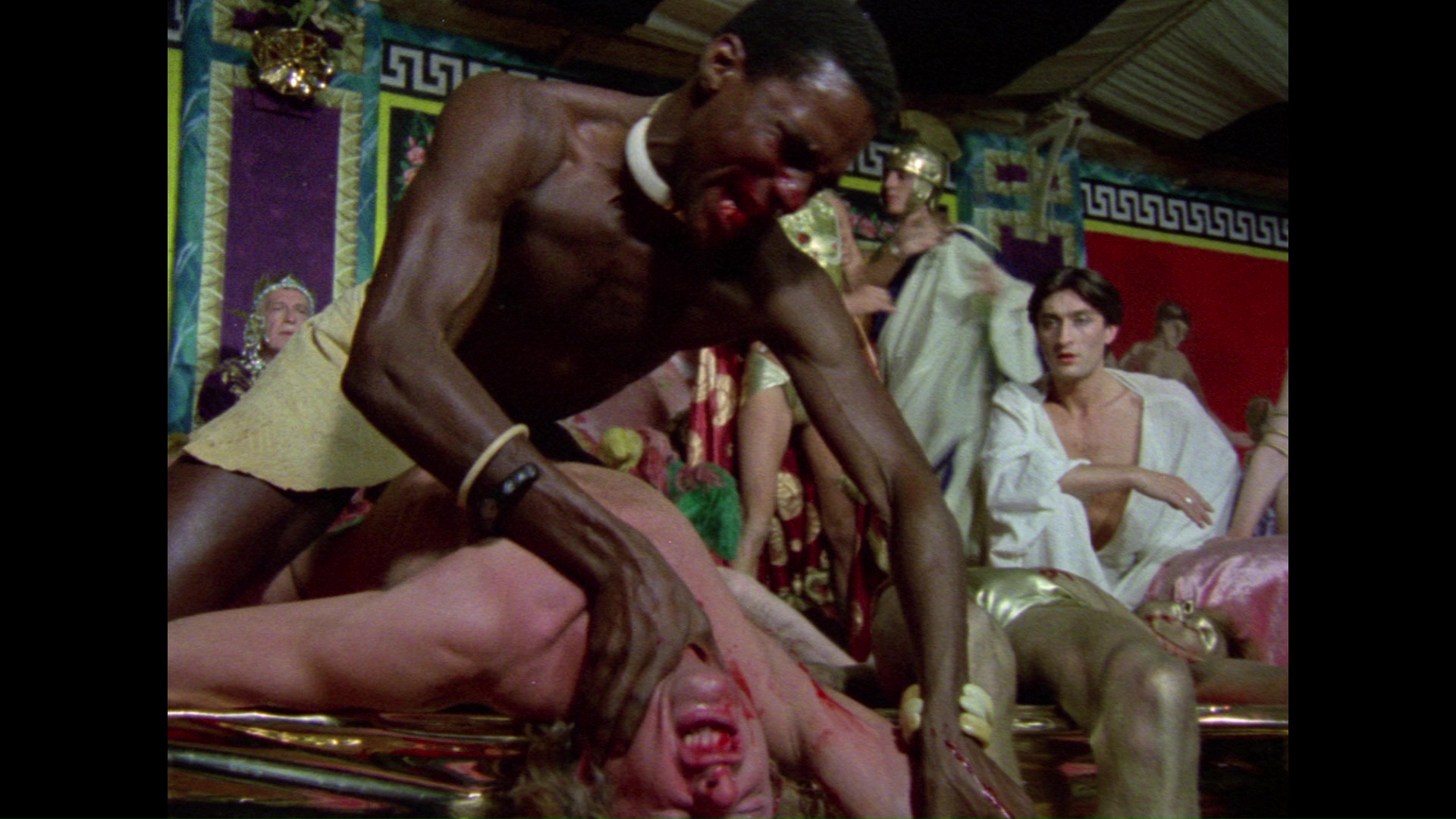 fascinating creative voices in British cinema from any era, Derek Jarman is a rare filmmaker who managed to combine the avant garde, costume dramas,
fascinating creative voices in British cinema from any era, Derek Jarman is a rare filmmaker who managed to combine the avant garde, costume dramas, 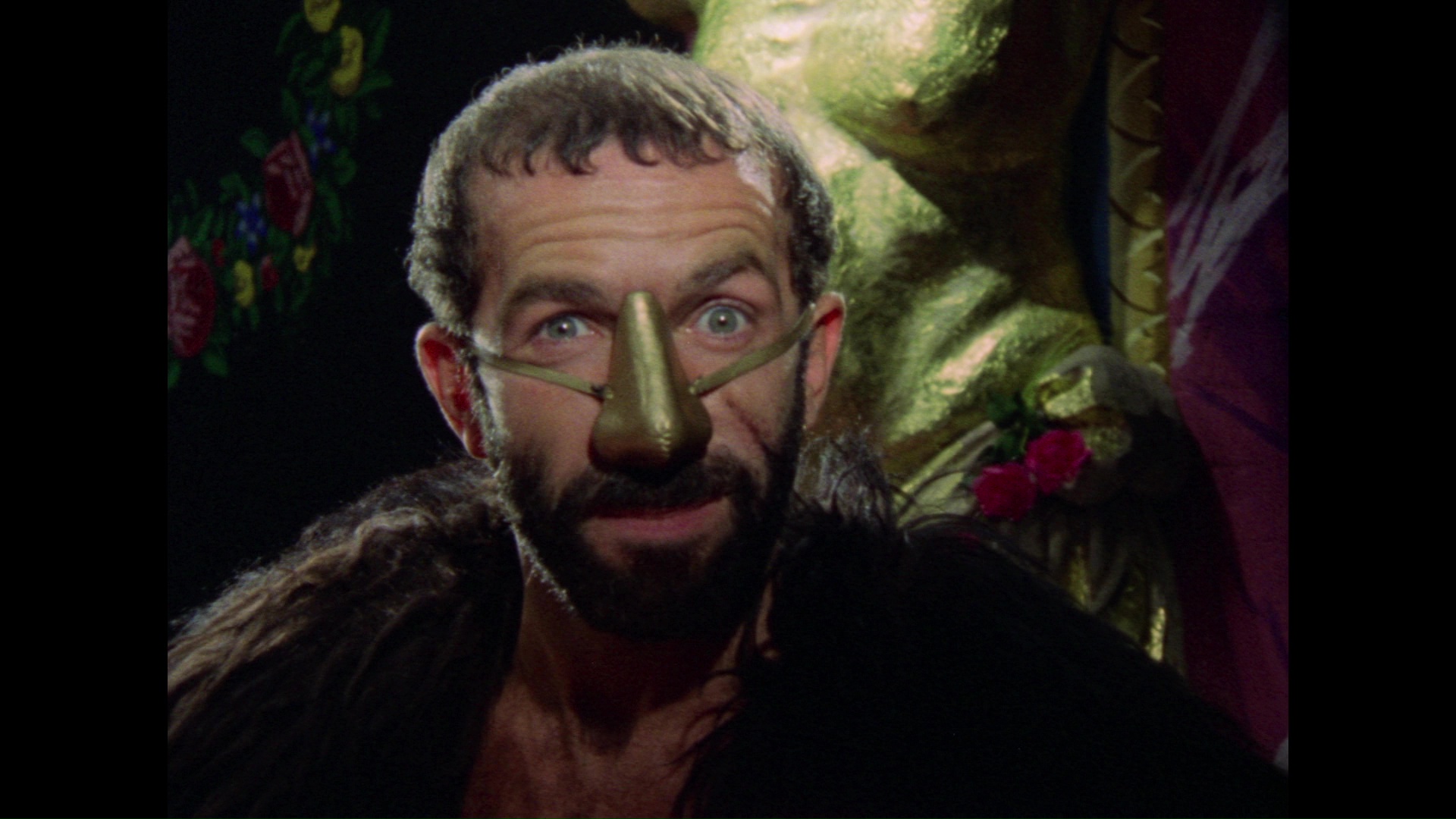 and music videos into a body of work that still has yet to be duplicated by anyone else. The handcrafted, colorful look he created, often with the aid of manipulated home movies and ragged Super 8 footage for either parts or the entirety of some of his films, gives his work a distinctive flavor that stands out compared to the more traditional look of his contemporaries, and it merges perfectly with his fierce gay activist sensibility to create a sense of an artistic whole over the course of his career. Though he died in 1994, Jarman's work continues to fascinate and beguile today perhaps even more than when it first assaulted an unsuspecting public. Several collections of his short films and some of his features have turned up on DVD over the years, but in 2018, the BFI finally gave him the red carpet treatment he deserves with a lavish Blu-ray set, Jarman Volume 1: 1972-1986, which gathers together his first six feature films and a slew of archival and new special features. (And yes, a second volume is forthcoming.)
and music videos into a body of work that still has yet to be duplicated by anyone else. The handcrafted, colorful look he created, often with the aid of manipulated home movies and ragged Super 8 footage for either parts or the entirety of some of his films, gives his work a distinctive flavor that stands out compared to the more traditional look of his contemporaries, and it merges perfectly with his fierce gay activist sensibility to create a sense of an artistic whole over the course of his career. Though he died in 1994, Jarman's work continues to fascinate and beguile today perhaps even more than when it first assaulted an unsuspecting public. Several collections of his short films and some of his features have turned up on DVD over the years, but in 2018, the BFI finally gave him the red carpet treatment he deserves with a lavish Blu-ray set, Jarman Volume 1: 1972-1986, which gathers together his first six feature films and a slew of archival and new special features. (And yes, a second volume is forthcoming.) 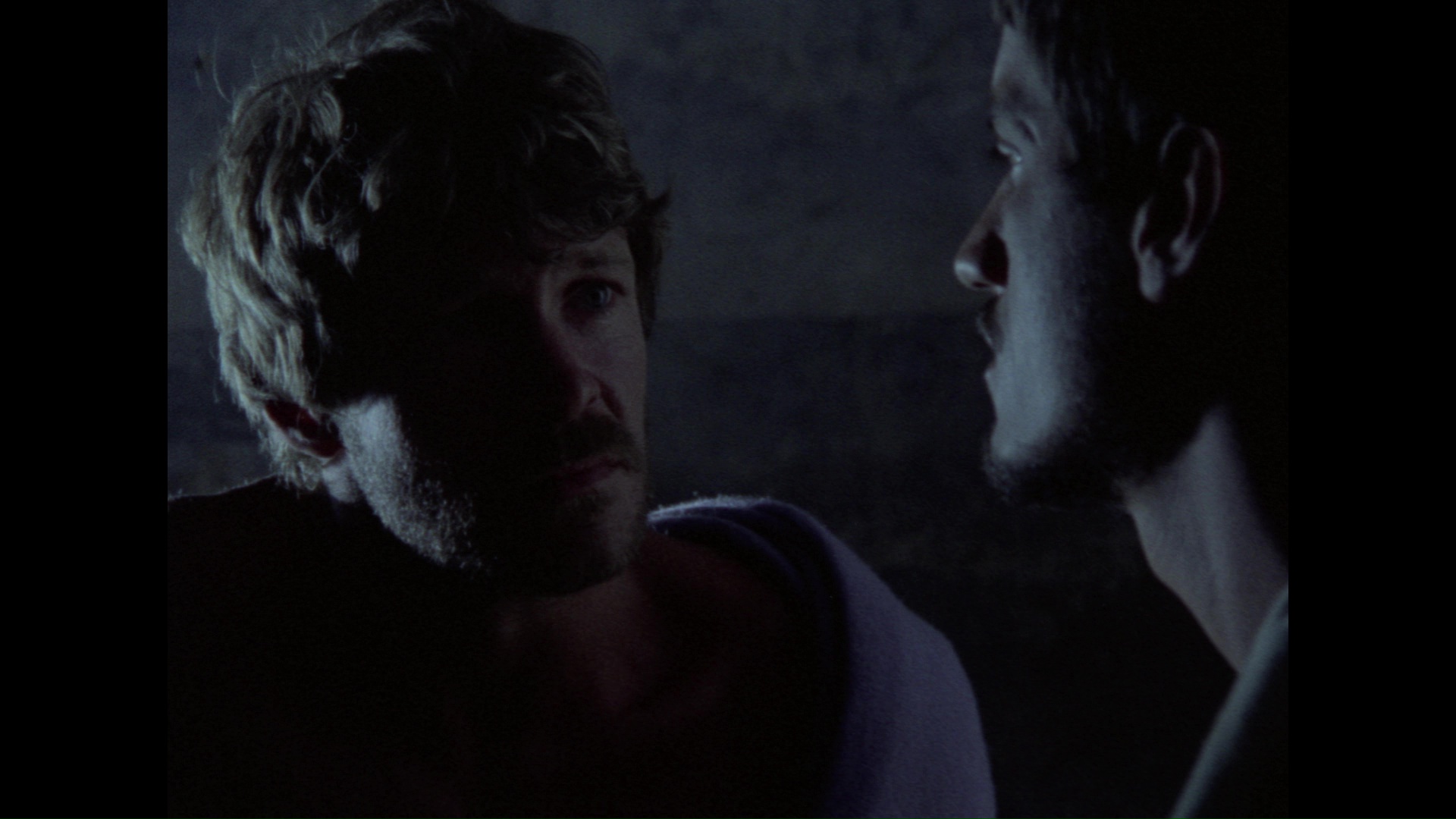 lusting after the unwilling Sebastiane, who rejects violence and temptations of the flesh despite the carnality around him. Instead Sebastiane prefers to spend time with the more introspective Justin (Warwick, the late co-star of If...), which leads to torture and his famous bow-and-arrow martyrdom.
lusting after the unwilling Sebastiane, who rejects violence and temptations of the flesh despite the carnality around him. Instead Sebastiane prefers to spend time with the more introspective Justin (Warwick, the late co-star of If...), which leads to torture and his famous bow-and-arrow martyrdom.
 who played the title character in The Rocky Horror Picture Show, and David Bowie tour dancer Lindsay Kemp (The Wicker Man) are among the revelers only adds to the glitter era atmosphere, and it's something of a jolt when the film shifts locations to suddenly become much more meditative and primal for the rest of its duration. The dreamy landscapes and frequent, then-shocking levels of nudity are still Jarman territory, too, though its presented in a calm, ethereal fashion that no one has ever managed to replicate.
who played the title character in The Rocky Horror Picture Show, and David Bowie tour dancer Lindsay Kemp (The Wicker Man) are among the revelers only adds to the glitter era atmosphere, and it's something of a jolt when the film shifts locations to suddenly become much more meditative and primal for the rest of its duration. The dreamy landscapes and frequent, then-shocking levels of nudity are still Jarman territory, too, though its presented in a calm, ethereal fashion that no one has ever managed to replicate.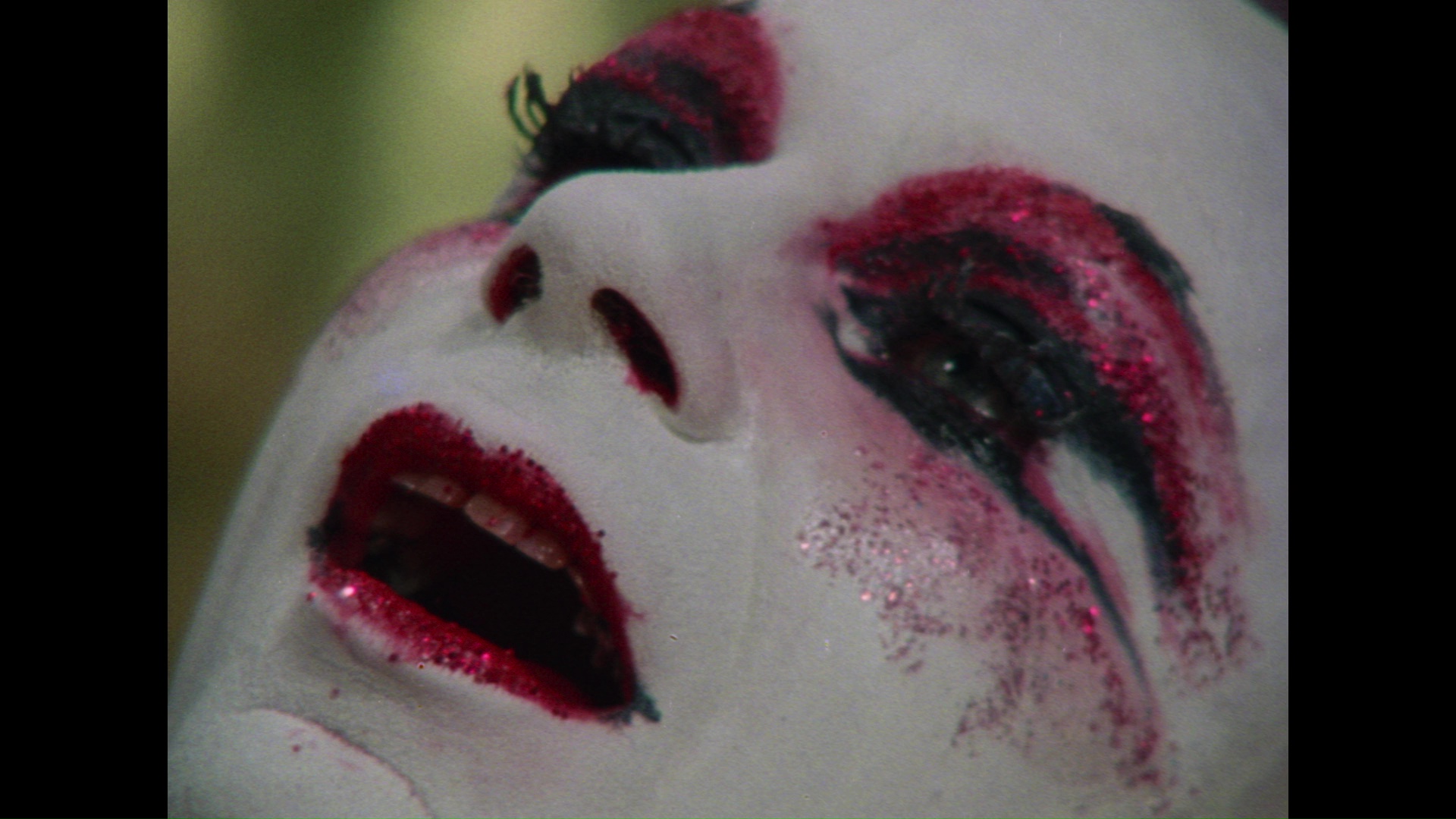 violent and sexual that it was slapped with an X rating. Jarman's own brief comments on the film in his writings fail to shed much light either (and co-director Paul Humfress isn't a frequent interview subject), but most likely, the film was taking a different angle on history by transposing the common experience of a young gay man - being ostracized and experiencing intimidation, persecution, and even physical violence - onto that of a famous Christian figure stranded in an all-male society where the usual norms don't apply. It's a challenging tactic that pays off if you're in the right mindset, but it's easy to see how viewers unfamiliar with both Jarman and the historical basis of St. Sebastian would feel left adrift among all the bare bodies and atmospheric but defiantly anachronistic experimental score by none other than Brian Eno!
violent and sexual that it was slapped with an X rating. Jarman's own brief comments on the film in his writings fail to shed much light either (and co-director Paul Humfress isn't a frequent interview subject), but most likely, the film was taking a different angle on history by transposing the common experience of a young gay man - being ostracized and experiencing intimidation, persecution, and even physical violence - onto that of a famous Christian figure stranded in an all-male society where the usual norms don't apply. It's a challenging tactic that pays off if you're in the right mindset, but it's easy to see how viewers unfamiliar with both Jarman and the historical basis of St. Sebastian would feel left adrift among all the bare bodies and atmospheric but defiantly anachronistic experimental score by none other than Brian Eno!
 2003 from Kino, it was presented matted (non-anamorphic) at around 1.75:1, which not only censored that one moment but pretty much demolished most of the other shots in the film. The Kino Lorber Blu-ray from 2012 bests its standard def predecessors handily with a new HD transfer, framed more spaciously at an odd 1.55:1 aspect ratio. It's an unusual
2003 from Kino, it was presented matted (non-anamorphic) at around 1.75:1, which not only censored that one moment but pretty much demolished most of the other shots in the film. The Kino Lorber Blu-ray from 2012 bests its standard def predecessors handily with a new HD transfer, framed more spaciously at an odd 1.55:1 aspect ratio. It's an unusual 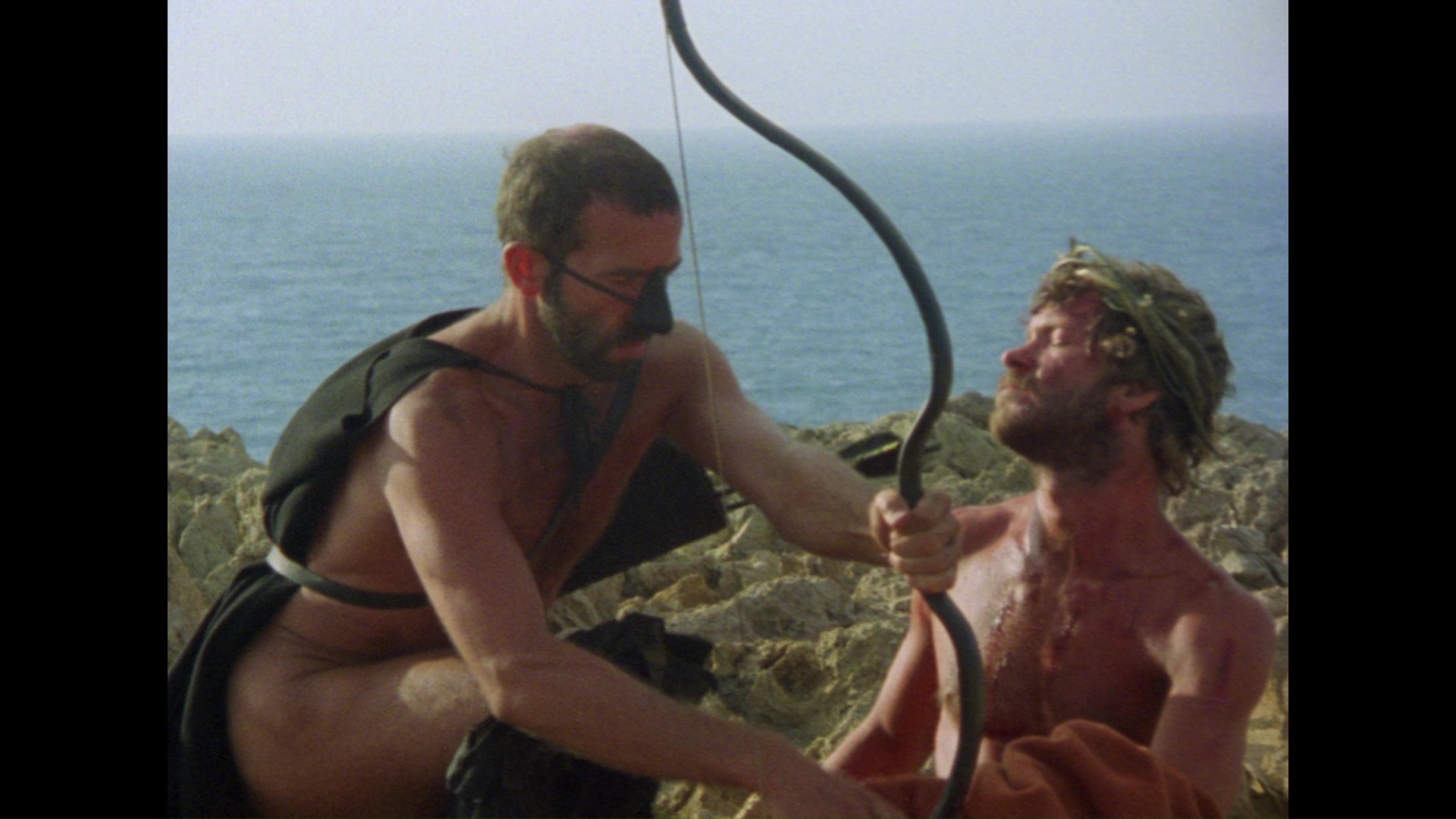 aesthetic choice but much, much easier to watch than the butchered DVD. Colors are more vivid and natural here, while the dark layer of grunge that plagued it in the past is largely gone here. Of course it still looks like a '70s film shot in 16mm which means the night scenes will never have the clarity and depth you'd find in a native 35mm film. The PCM mono audio is also sharper than the flat soundtrack heard before; in a bold movie, the film was actually shot in colloquial Latin and subtitled in English, an unprecedented move for a British film. The English subtitles here are also optional, so you can easily switch them off and just enjoy the film as a mood piece, too.
aesthetic choice but much, much easier to watch than the butchered DVD. Colors are more vivid and natural here, while the dark layer of grunge that plagued it in the past is largely gone here. Of course it still looks like a '70s film shot in 16mm which means the night scenes will never have the clarity and depth you'd find in a native 35mm film. The PCM mono audio is also sharper than the flat soundtrack heard before; in a bold movie, the film was actually shot in colloquial Latin and subtitled in English, an unprecedented move for a British film. The English subtitles here are also optional, so you can easily switch them off and just enjoy the film as a mood piece, too.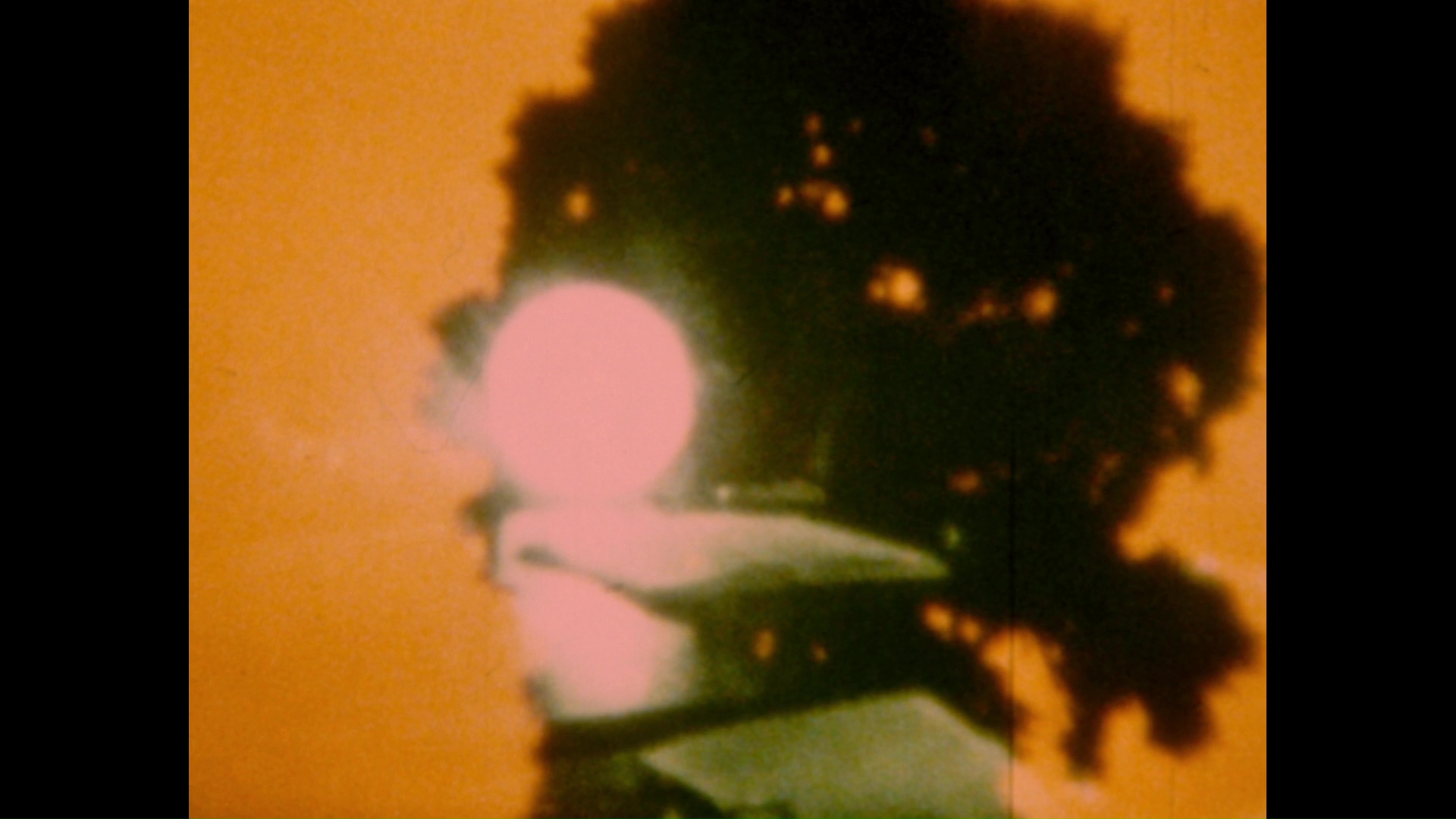 Shadow of the Sun. Here we find his penchant for taking home movies and altering them into a hypnotic work of art at full force, using a Throbbing Gristle soundtrack to accompany slowed-down footage from his personal collection with heavy color tinting to give it a blazing, intense look similar to what you'd find in a Stan Brakhage film. First released on DVD in Italy by Raro in a Jarman Super 8 set,
Shadow of the Sun. Here we find his penchant for taking home movies and altering them into a hypnotic work of art at full force, using a Throbbing Gristle soundtrack to accompany slowed-down footage from his personal collection with heavy color tinting to give it a blazing, intense look similar to what you'd find in a Stan Brakhage film. First released on DVD in Italy by Raro in a Jarman Super 8 set, 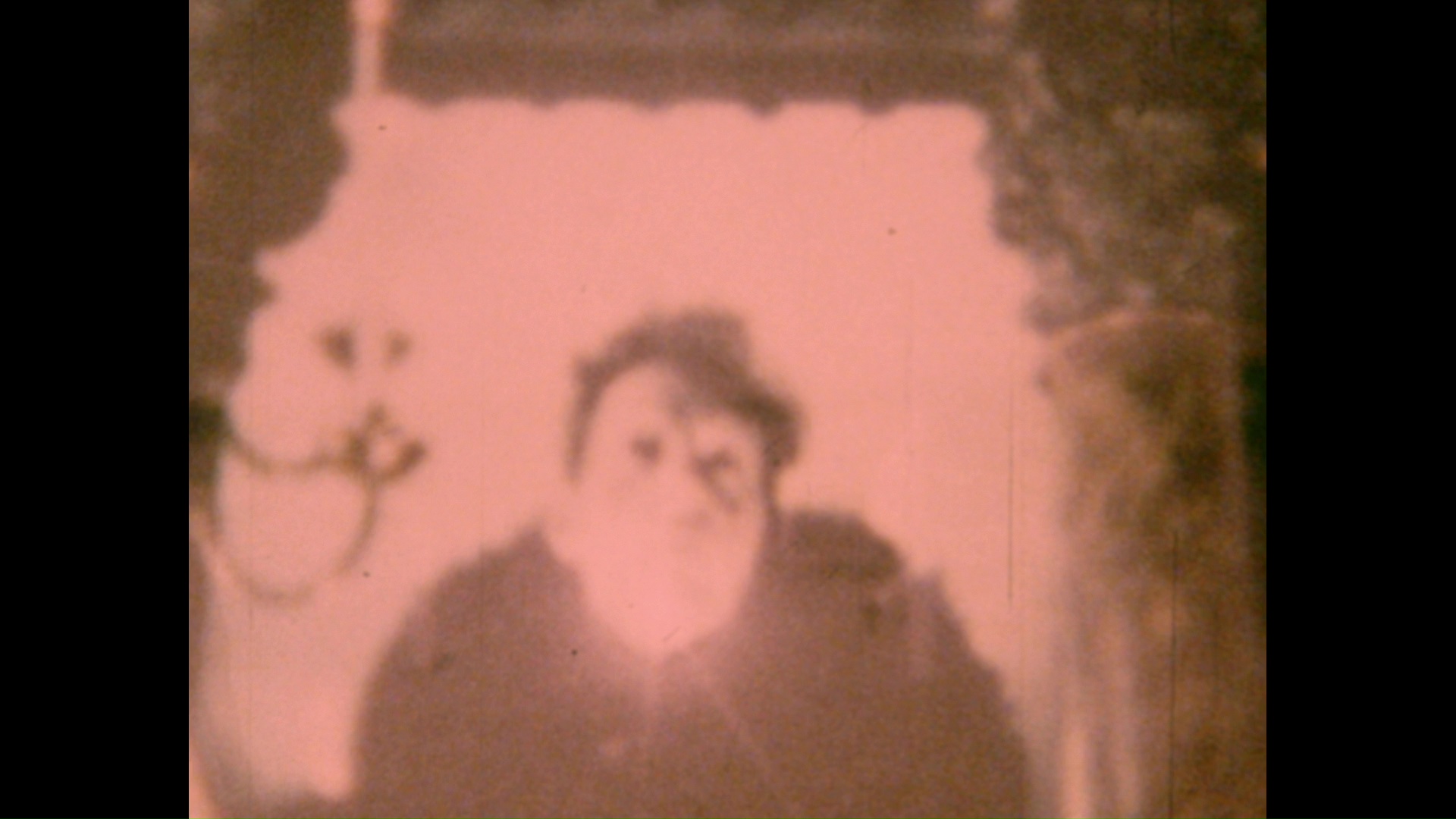 it looks as good as possible here given the intentional lo-fi look of the film and extreme filtering and other tweaking done to the imagery.
it looks as good as possible here given the intentional lo-fi look of the film and extreme filtering and other tweaking done to the imagery.  While
While 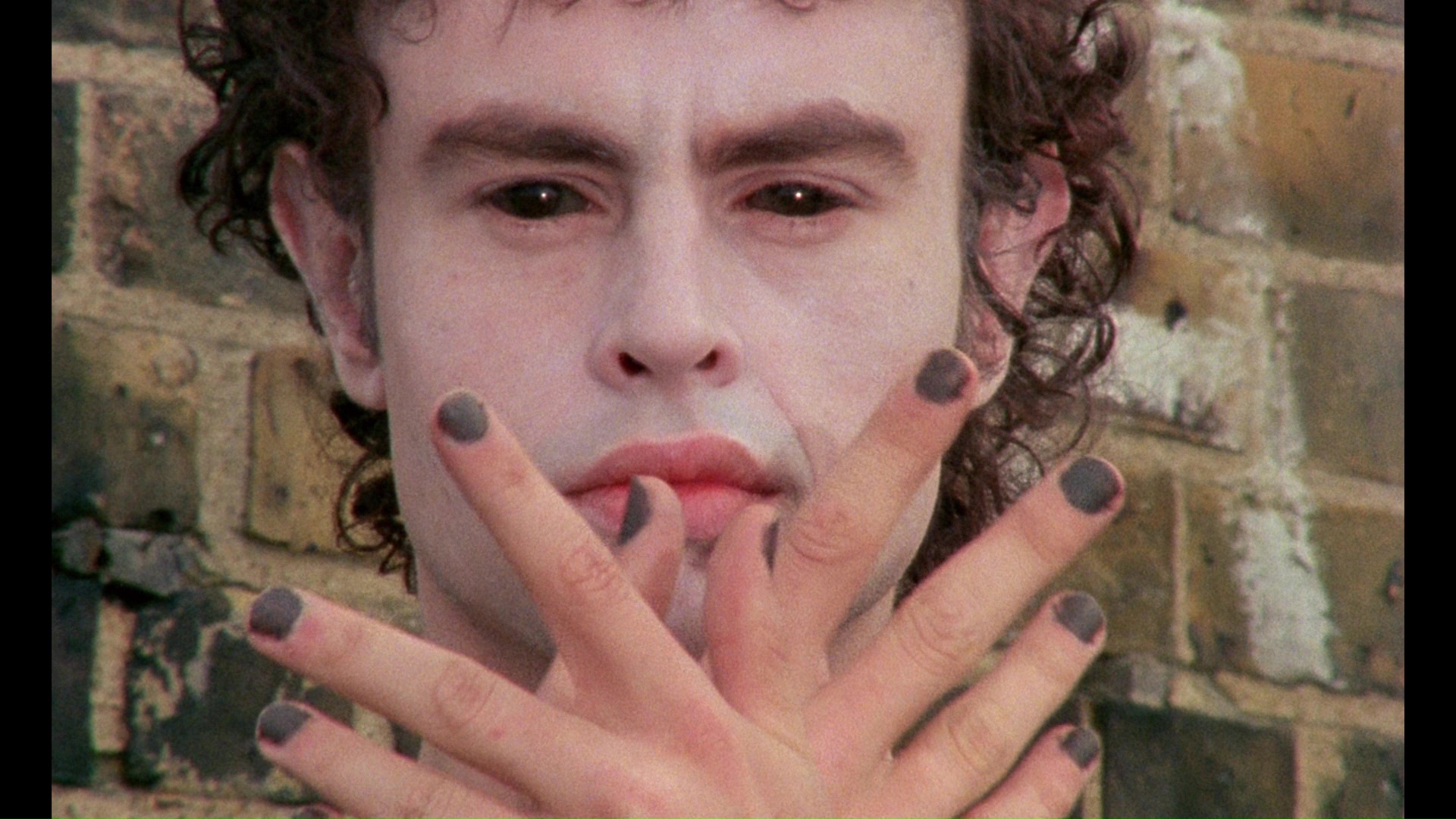 British filmmakers were giddily overturning the relationship between music and cinema during the 1970s, Jarman entered this tricky arena with Jubilee, a complicated, challenging look at a punked-out, pre-Thatcher England that groups together an odd assortment of music and theatre personalities for a one-of-a-kind experience. The story, what little there is, concerns the journey of Queen Elizabeth I (Runacre) who, thanks to a ghostly white angel (StageFright’s Brandon), travels through time to a Britain torn apart by gangs and punk anarchy. Violence and sexual decadence are the order of the day for this crumbling land populated by a weird gallery of characters: Mad (pop singer Wilcox), an aspiring singer with neon orange hair and baby fat who belts out her tunes in a blitzed out Buckingham Palace; Angel (Opera’s Charleson, who later disowned the film), a pansexual bleach blond youth; Amyl Nitrate (Jordan), a vicious female gang leader; and Kid (a very young Adam Ant), a leather-clad lad who becomes the object of several characters’ fixations. Rocky Horror veterans Richard O’Brien (in whacked out period dress) and “Little Nell” Campbell also hop along for the ride, which includes a gruesome sexual asphyxia murder, rampant destruction of public property, a nightclub orgy, and some very catchy songs.
British filmmakers were giddily overturning the relationship between music and cinema during the 1970s, Jarman entered this tricky arena with Jubilee, a complicated, challenging look at a punked-out, pre-Thatcher England that groups together an odd assortment of music and theatre personalities for a one-of-a-kind experience. The story, what little there is, concerns the journey of Queen Elizabeth I (Runacre) who, thanks to a ghostly white angel (StageFright’s Brandon), travels through time to a Britain torn apart by gangs and punk anarchy. Violence and sexual decadence are the order of the day for this crumbling land populated by a weird gallery of characters: Mad (pop singer Wilcox), an aspiring singer with neon orange hair and baby fat who belts out her tunes in a blitzed out Buckingham Palace; Angel (Opera’s Charleson, who later disowned the film), a pansexual bleach blond youth; Amyl Nitrate (Jordan), a vicious female gang leader; and Kid (a very young Adam Ant), a leather-clad lad who becomes the object of several characters’ fixations. Rocky Horror veterans Richard O’Brien (in whacked out period dress) and “Little Nell” Campbell also hop along for the ride, which includes a gruesome sexual asphyxia murder, rampant destruction of public property, a nightclub orgy, and some very catchy songs.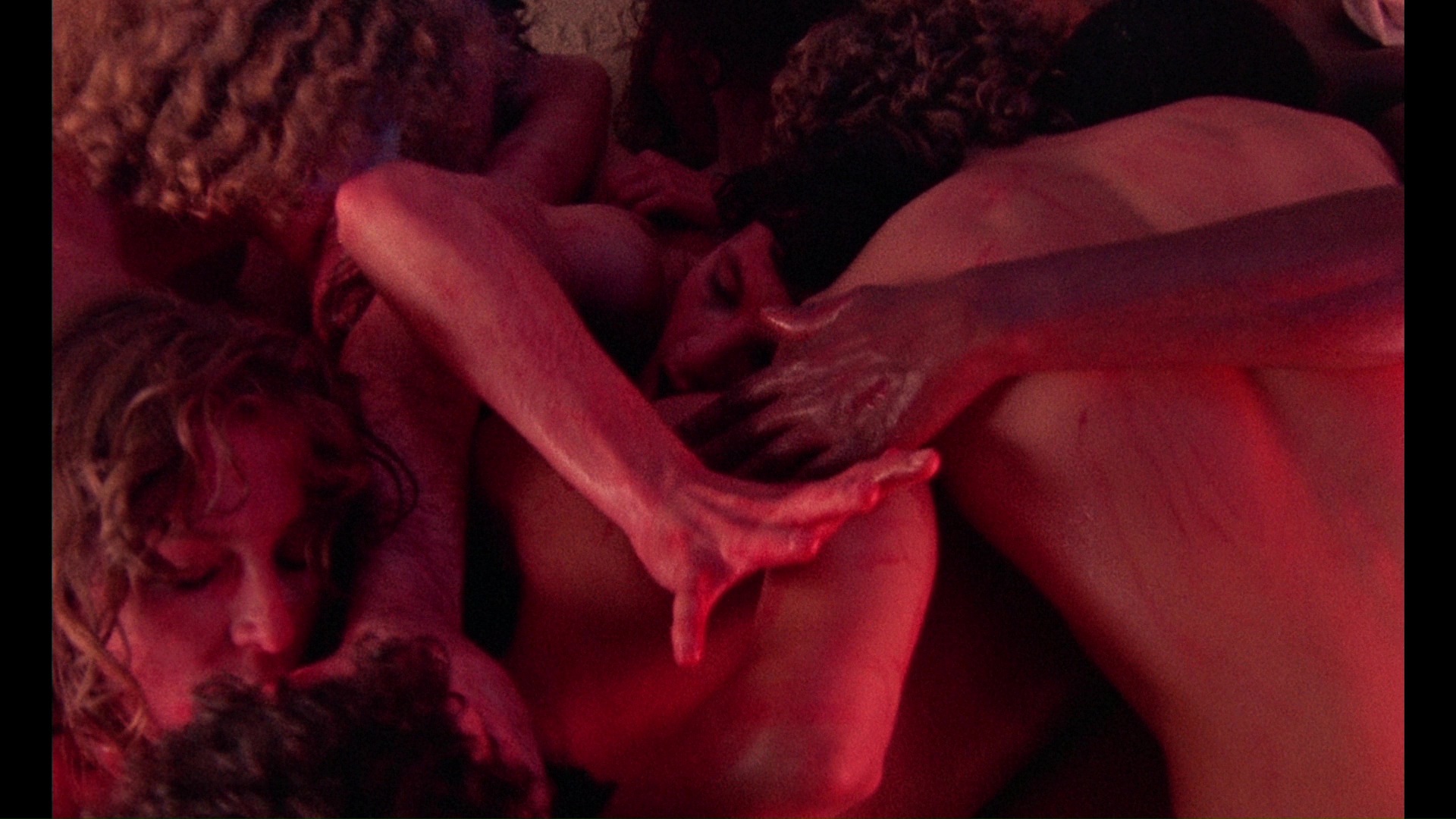 Jarman really established his visual style in this film with a striking visual patchwork of Super 8 inserts, stream of consciousness editing, opulent costumes and sets, and abundant but unsettling nudity. The now legendary soundtrack remains one of the film’s biggest selling points,
Jarman really established his visual style in this film with a striking visual patchwork of Super 8 inserts, stream of consciousness editing, opulent costumes and sets, and abundant but unsettling nudity. The now legendary soundtrack remains one of the film’s biggest selling points, 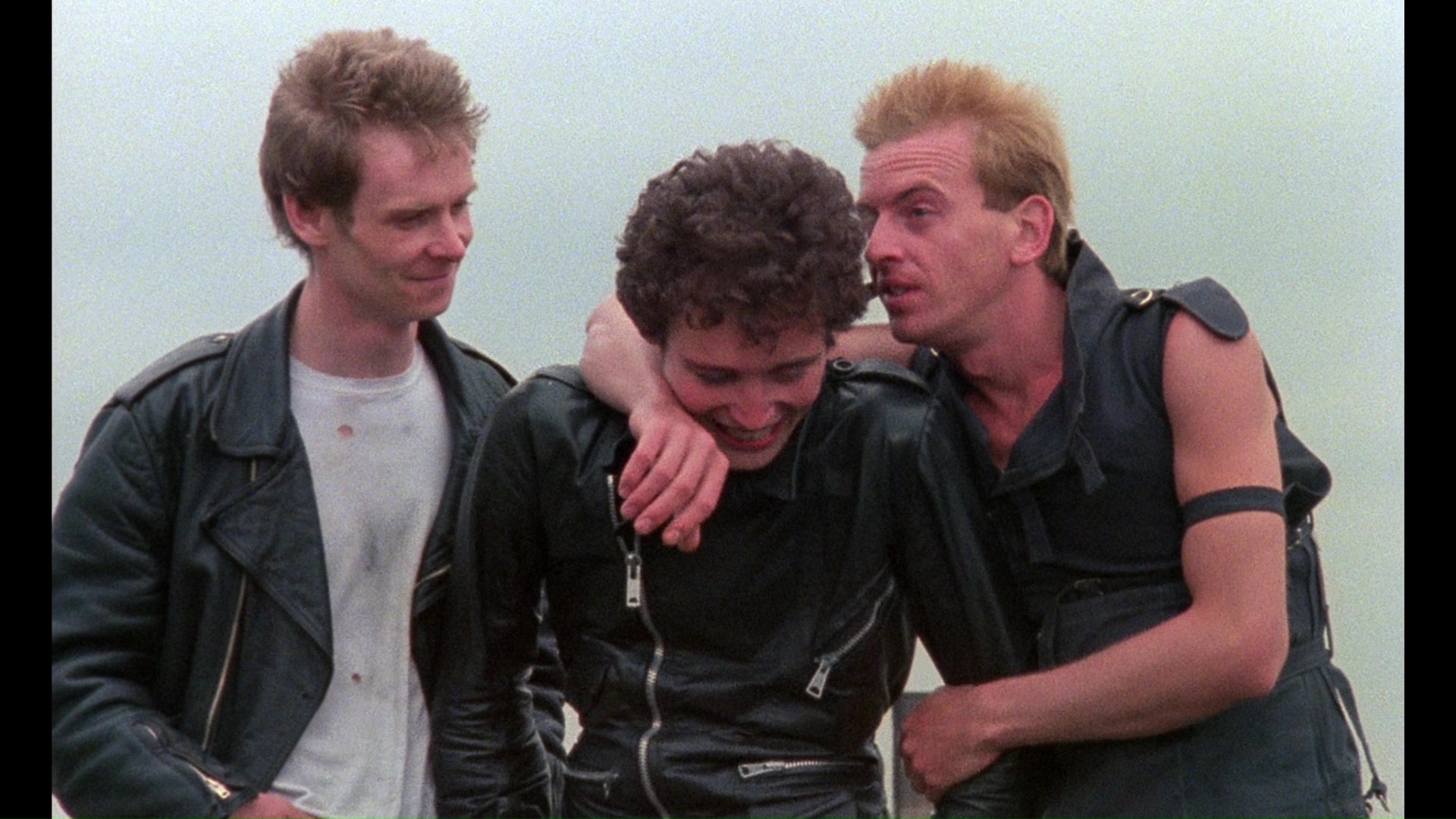 but its chaotic spirit also endeared the film itself to several generations of university students and underground movie fanatics. All others might want to start somewhere else, as this is not the most easily accessible film in the art house canon; the shifts in time and rambling monologues can be daunting to the inexperienced, and those who find Kenneth Anger too heady will no doubt run screaming during the first ten minutes.
but its chaotic spirit also endeared the film itself to several generations of university students and underground movie fanatics. All others might want to start somewhere else, as this is not the most easily accessible film in the art house canon; the shifts in time and rambling monologues can be daunting to the inexperienced, and those who find Kenneth Anger too heady will no doubt run screaming during the first ten minutes. 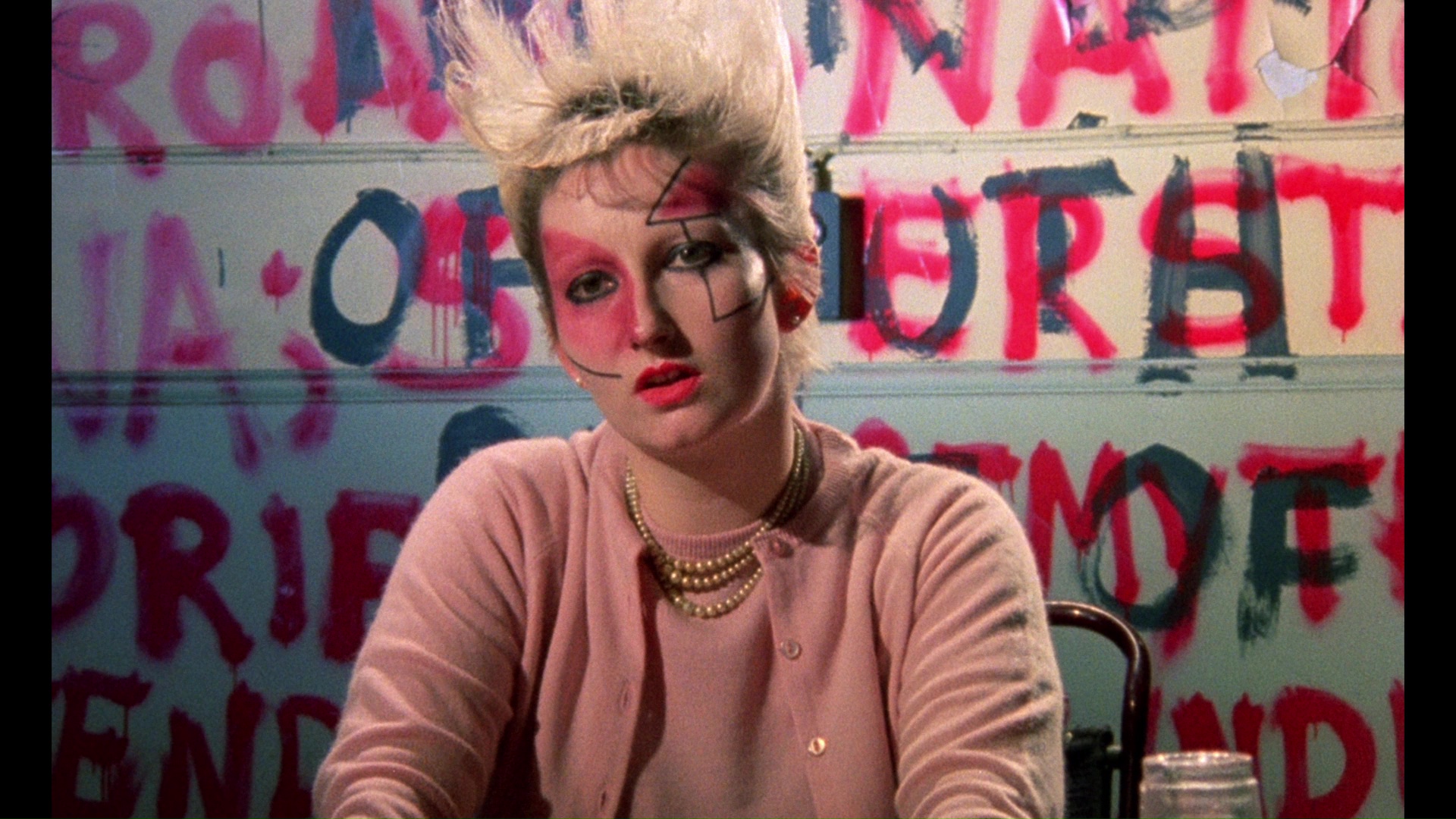 and a lot of fire) looking appropriately grainy and worn. The disc also contains a “Face to Face” interview with Jarman running a little under half an hour; shot one year before the director’s death, this piece offers a thumbnail sketch of his artistic philosophy and makes for an interesting introduction to his work for newcomers wary of jumping into the deep end with the films themselves. More lavish is the 2003 American disc from Criterion, which presents the film in
and a lot of fire) looking appropriately grainy and worn. The disc also contains a “Face to Face” interview with Jarman running a little under half an hour; shot one year before the director’s death, this piece offers a thumbnail sketch of his artistic philosophy and makes for an interesting introduction to his work for newcomers wary of jumping into the deep end with the films themselves. More lavish is the 2003 American disc from Criterion, which presents the film in 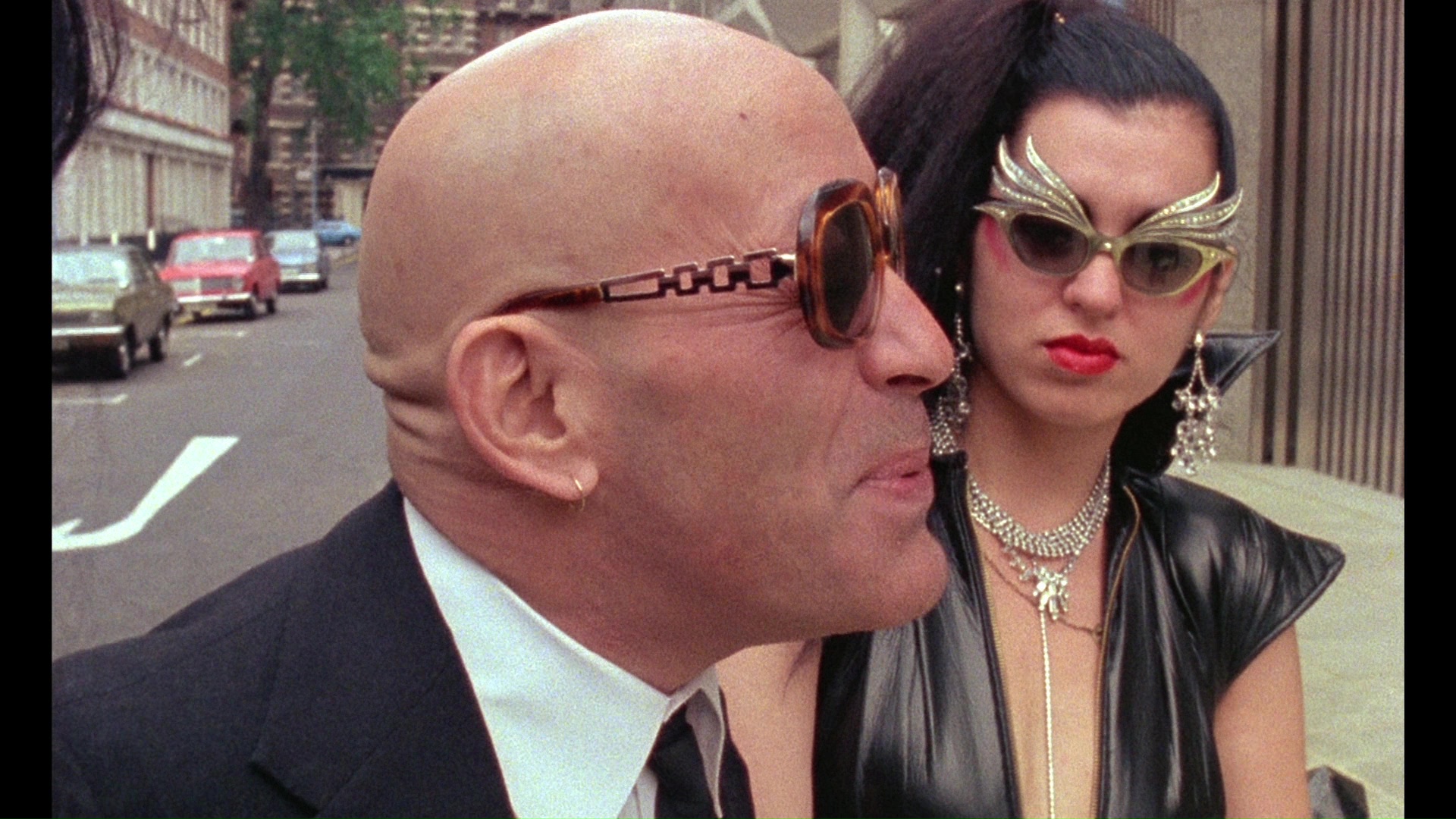 a sharp, appreciably more pristine letterboxed edition, which adds slight information to the sides while trimming about as much extraneous space from the top and bottom. The biggest extra is a half hour documentary, “Jubilee: A Time Less Golden,” created by actor Spencer Leigh (who jumped on the Jarman ship later with the more sedate Caravaggio, but more on that below). Runacre, Wilcox, film writer Tony Rayns, production designer Christopher Hobbs, and filmmakers John Maybury and Lee Drysdale offer their memories and observations about Jarman and this film in particular. Looking warm and wholesome, the charmingly accented Wilcox scores the most memorable points as she recalls her trepidation as an unskilled actress thrown into such a challenging project. Also included is a short 8mm film, which later became the ballerina-and-scissors vision in the film (though minus the feature’s nudity), a lengthy gallery of black and white continuity snapshots, various stills and scrapbook tidbits, and the raucous original trailer, as well as historical notes by Jarman scholar Tony Peake. The disc also offers optional English subtitles for those having trouble with the hodgepodge of accents.
a sharp, appreciably more pristine letterboxed edition, which adds slight information to the sides while trimming about as much extraneous space from the top and bottom. The biggest extra is a half hour documentary, “Jubilee: A Time Less Golden,” created by actor Spencer Leigh (who jumped on the Jarman ship later with the more sedate Caravaggio, but more on that below). Runacre, Wilcox, film writer Tony Rayns, production designer Christopher Hobbs, and filmmakers John Maybury and Lee Drysdale offer their memories and observations about Jarman and this film in particular. Looking warm and wholesome, the charmingly accented Wilcox scores the most memorable points as she recalls her trepidation as an unskilled actress thrown into such a challenging project. Also included is a short 8mm film, which later became the ballerina-and-scissors vision in the film (though minus the feature’s nudity), a lengthy gallery of black and white continuity snapshots, various stills and scrapbook tidbits, and the raucous original trailer, as well as historical notes by Jarman scholar Tony Peake. The disc also offers optional English subtitles for those having trouble with the hodgepodge of accents.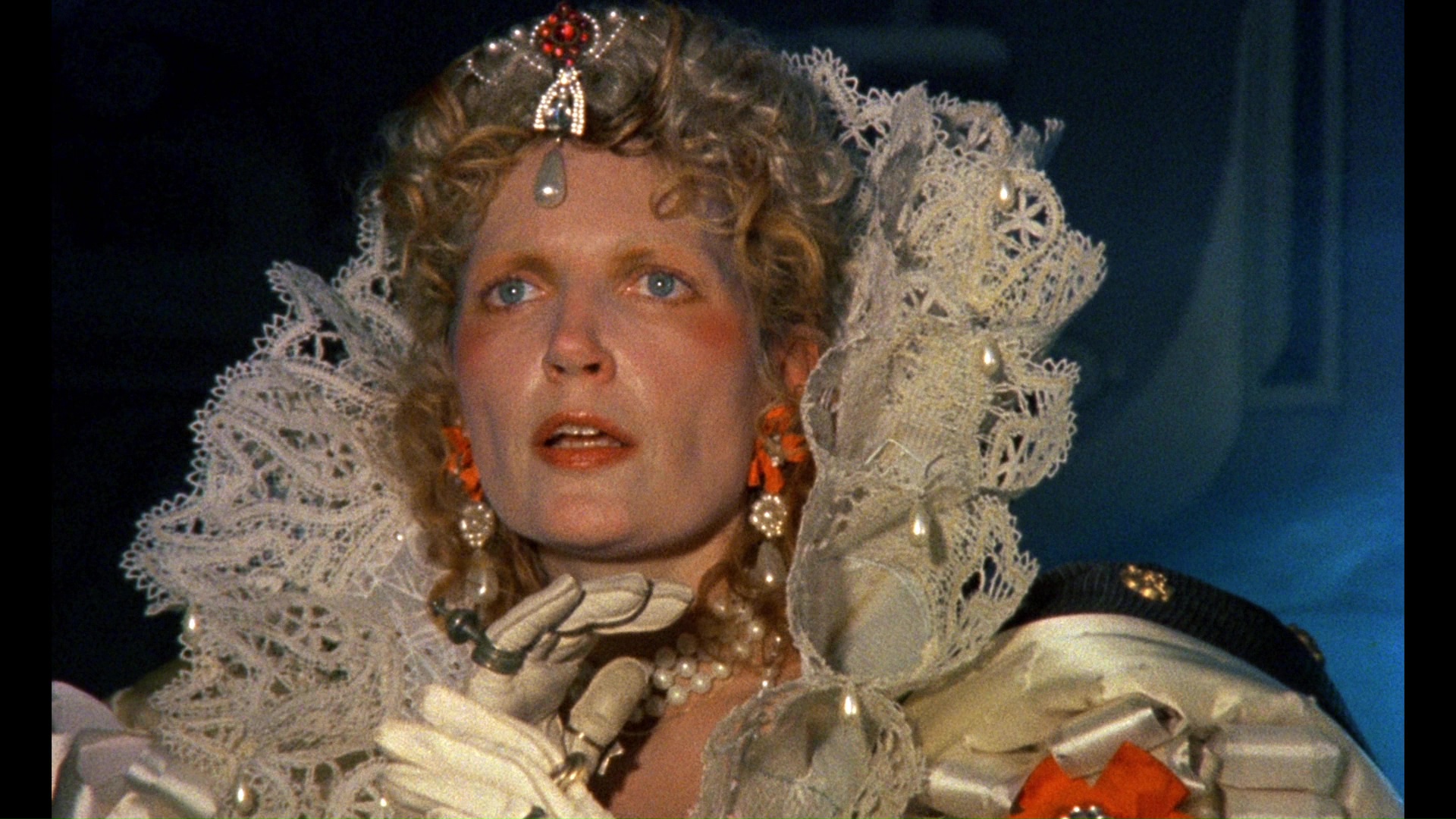 years later, Jubilee finally got a fresh new transfer with the BFI set and improves significantly across the board thanks to advances in transfer technology during that period. Detail, film grain, and color resolution all look impressive, with that crazy punk palette faring well with lots of riotous magentas, reds, and pinks all over the place. The LPCM English mono track (with optional English subtitles) sounds terrific as well and minimizes the sad fact that the film was done cheaply and will never get a multi-channel mix for that great soundtrack.
years later, Jubilee finally got a fresh new transfer with the BFI set and improves significantly across the board thanks to advances in transfer technology during that period. Detail, film grain, and color resolution all look impressive, with that crazy punk palette faring well with lots of riotous magentas, reds, and pinks all over the place. The LPCM English mono track (with optional English subtitles) sounds terrific as well and minimizes the sad fact that the film was done cheaply and will never get a multi-channel mix for that great soundtrack. 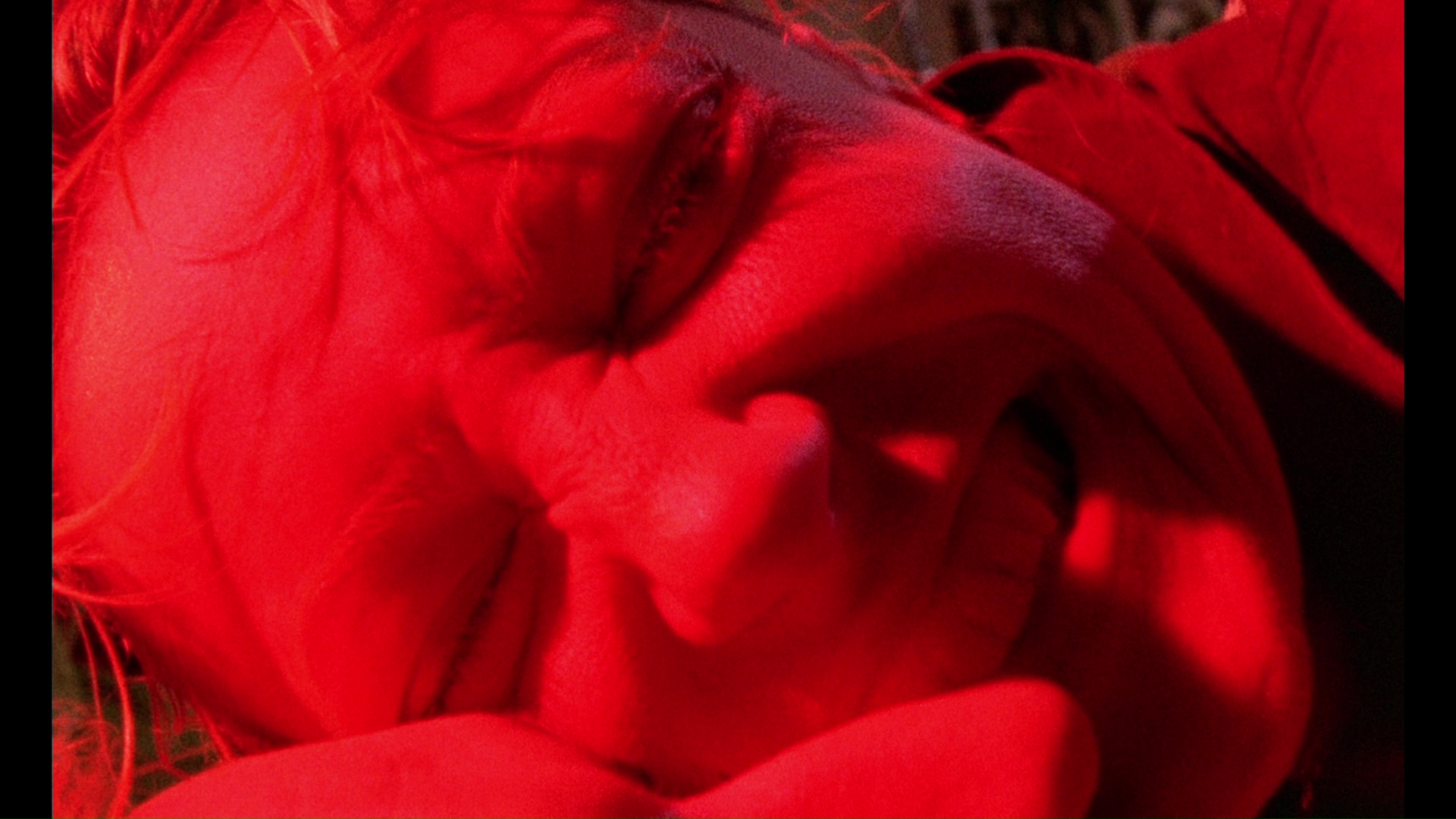 in a short from the Psychic Television collective, while "TG: Psychic Rally in Heaven" (8m15s), also from '81, offers a very abstract depiction of Throbbing Gristle in concert. The following year's "Pirate Tape" (15m21s) is an equally experimental look at author William S. Burroughs walking around a gay urban district, signing autographs, and being surrounded by a wide range of young men. (Those shorts were seen earlier in another Raro Jarman Super 8 set but look much better here.) Jumping to the modern era, Willcox gives another take on her role here in a 2014 interview (7m33s) about being a "nice punk" who was focused at the time on acting and singing all the time including this film, which she joined originally under the title Down with the Queen. A lengthy interview with punk singer Jordan (33m8s), sporting awesome purple hair, is also fond of her participation in the film and the bold melting pot of cultural elements that earned its place in the counterculture pantheon. Finally Jarman's friend and future script collaborator Lee Drysdale has a chat (16m56s) about his ongoing relationship with the director and his odd "production assistant" role on the film (which wasn't exactly what you'd expect). A gallery of photos and costume design drawings is also included.
in a short from the Psychic Television collective, while "TG: Psychic Rally in Heaven" (8m15s), also from '81, offers a very abstract depiction of Throbbing Gristle in concert. The following year's "Pirate Tape" (15m21s) is an equally experimental look at author William S. Burroughs walking around a gay urban district, signing autographs, and being surrounded by a wide range of young men. (Those shorts were seen earlier in another Raro Jarman Super 8 set but look much better here.) Jumping to the modern era, Willcox gives another take on her role here in a 2014 interview (7m33s) about being a "nice punk" who was focused at the time on acting and singing all the time including this film, which she joined originally under the title Down with the Queen. A lengthy interview with punk singer Jordan (33m8s), sporting awesome purple hair, is also fond of her participation in the film and the bold melting pot of cultural elements that earned its place in the counterculture pantheon. Finally Jarman's friend and future script collaborator Lee Drysdale has a chat (16m56s) about his ongoing relationship with the director and his odd "production assistant" role on the film (which wasn't exactly what you'd expect). A gallery of photos and costume design drawings is also included. 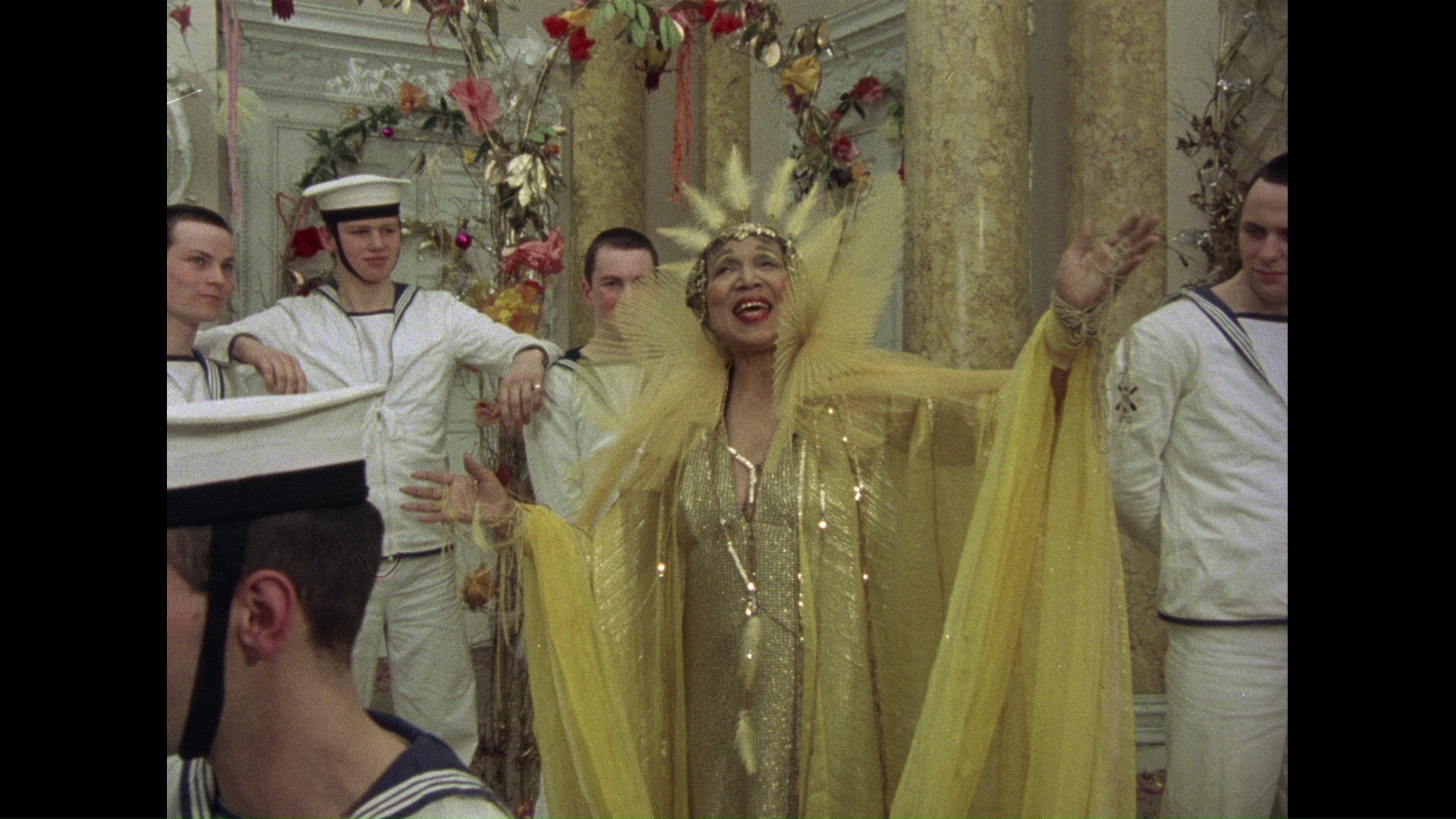 It's
It's  hard to believe Jarman was the first filmmaker to tackle a big screen version of William Shakespeare's last play, The Tempest (at least if you don't count the loose sci-fi version, Forbidden Planet). This challenging fantasy concerns Prospero (real-life magician Williams), a reclusive magician stranded on an island with his sheltered daughter, Miranda (pop star Wilcox), and a monster, Caliban (Birkett). A sea storm washes ashore Prospero's brother, Alonso (Bull), who had stolen the title of Duke of Milan from Prospero, and Alonso's son, Ferdinand (Meyer, one half of the knife-throwing twins from Octopussy). Of course, Ferdinand and Miranda are immediately smitten, and Prospero must decide at what cost he intends to pursue his revenge against those he perceives as his enemies.
hard to believe Jarman was the first filmmaker to tackle a big screen version of William Shakespeare's last play, The Tempest (at least if you don't count the loose sci-fi version, Forbidden Planet). This challenging fantasy concerns Prospero (real-life magician Williams), a reclusive magician stranded on an island with his sheltered daughter, Miranda (pop star Wilcox), and a monster, Caliban (Birkett). A sea storm washes ashore Prospero's brother, Alonso (Bull), who had stolen the title of Duke of Milan from Prospero, and Alonso's son, Ferdinand (Meyer, one half of the knife-throwing twins from Octopussy). Of course, Ferdinand and Miranda are immediately smitten, and Prospero must decide at what cost he intends to pursue his revenge against those he perceives as his enemies.  chiaroscuro lighting, windswept English landscapes, and some genuinely eye-popping costumes, all of which may not be traditionally Shakespearean but still feel oddly organic to the story. The real centerpiece of the film and its most justifiably celebrated element is the lavish wedding/masque finale, with men dancing in sailor suits and a gold-garbed Elisabeth Welch (the nightclub singer from the terrifying dummy segment of 1945's Dead of Night) singing a heady rendition of "Stormy Weather." Originally the lead role of Prospero was offered to John Gielgud, and a minor controversy brewed years later in 1991 (not long before Jarman's death) when Peter Greenaway enlisted Gielgud to star in Prospero's Books, which features a few visual ideas
chiaroscuro lighting, windswept English landscapes, and some genuinely eye-popping costumes, all of which may not be traditionally Shakespearean but still feel oddly organic to the story. The real centerpiece of the film and its most justifiably celebrated element is the lavish wedding/masque finale, with men dancing in sailor suits and a gold-garbed Elisabeth Welch (the nightclub singer from the terrifying dummy segment of 1945's Dead of Night) singing a heady rendition of "Stormy Weather." Originally the lead role of Prospero was offered to John Gielgud, and a minor controversy brewed years later in 1991 (not long before Jarman's death) when Peter Greenaway enlisted Gielgud to star in Prospero's Books, which features a few visual ideas 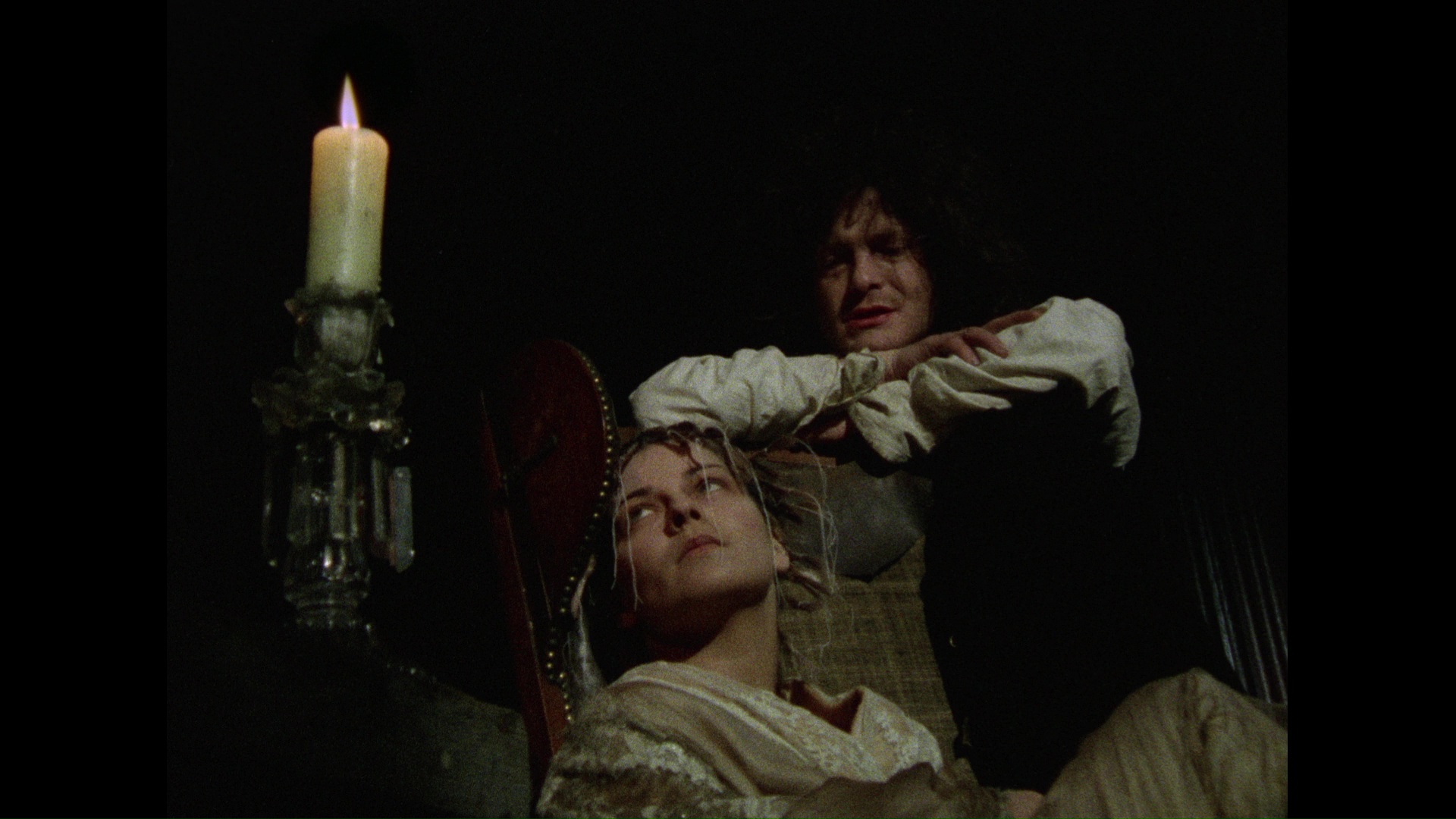 originating here: the representation of Caliban's mother Sycorax (whose brief breast-feeding scene is probably the most jarring moment in the film), Ferdinand's nude "birth" from the waves, and the more sexualized representation of Miranda.
originating here: the representation of Caliban's mother Sycorax (whose brief breast-feeding scene is probably the most jarring moment in the film), Ferdinand's nude "birth" from the waves, and the more sexualized representation of Miranda. 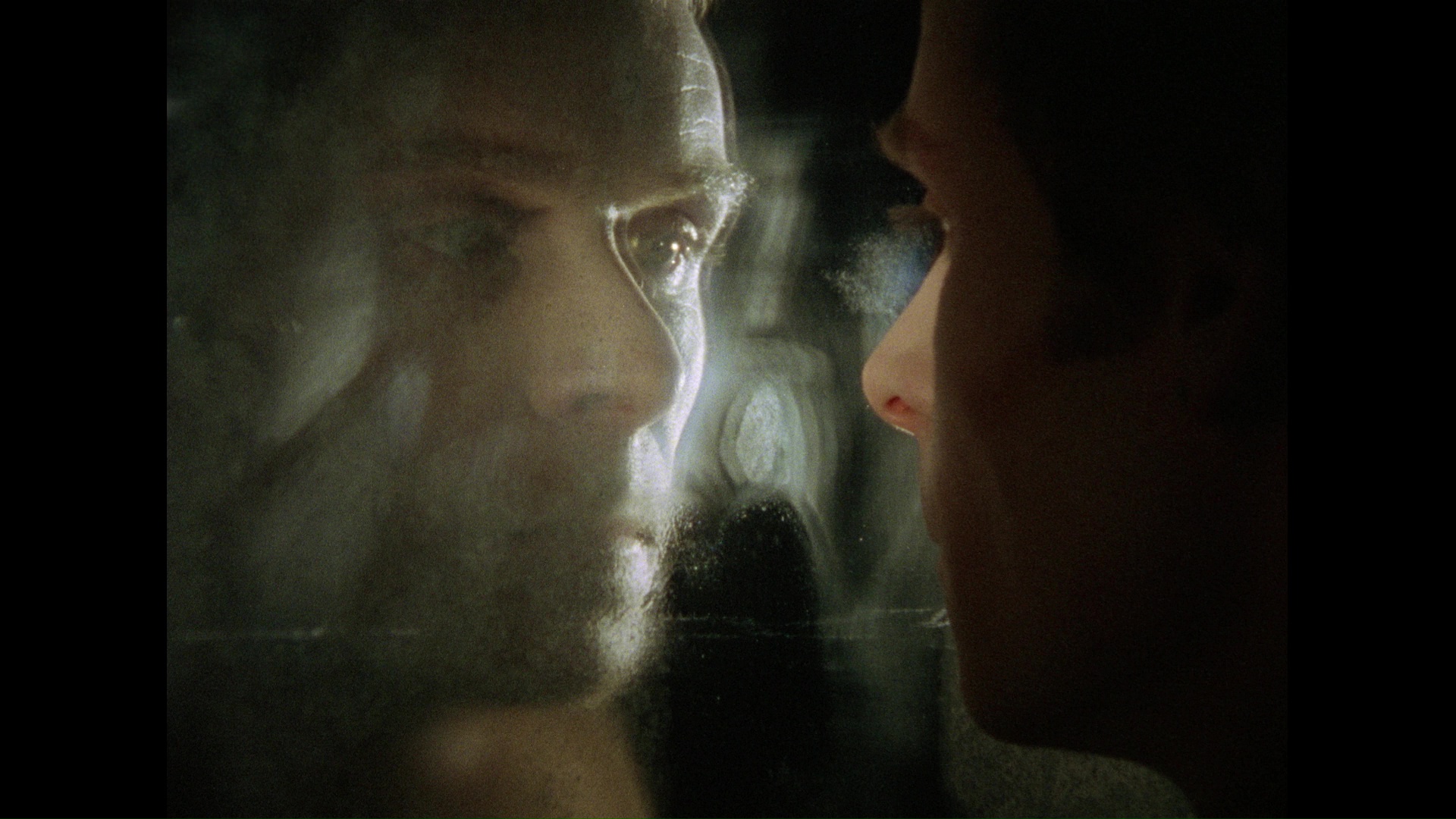 Blu-ray for The Tempest was a welcome improvement in 2012 when Kino Lorber issued it in the U.S., given that transfer technology has improved considerably in the several years since its last telecine pass and the obvious benefits of 1080p. As usual for Kino, there's very minimal digital tweaking here; what you're seeing is about as close to the original celluloid as you'll get on an HD set. The retention of the original aspect ratio again is welcome, and colors really sing (especially during that finale) while the very dark first act is now much easier to make out. There isn't much that could be done to improve the rather muddy mono mix thanks to the original recording process, but this sounds about as good as it likely ever will. That Blu-ray dispenses with two of the minor extras of the DVD (a U.K. pressbook transcript and stills gallery) but retains the most important ones: a trio of Jarman short films, all shot in his beloved Super 8 format between 1971 and 1973: "A Journey to Avebury," "Garden of Luxor," and the best of them, the sparkling "Art of Mirrors," which anticipates moments in Jarman's The Last of England.
Blu-ray for The Tempest was a welcome improvement in 2012 when Kino Lorber issued it in the U.S., given that transfer technology has improved considerably in the several years since its last telecine pass and the obvious benefits of 1080p. As usual for Kino, there's very minimal digital tweaking here; what you're seeing is about as close to the original celluloid as you'll get on an HD set. The retention of the original aspect ratio again is welcome, and colors really sing (especially during that finale) while the very dark first act is now much easier to make out. There isn't much that could be done to improve the rather muddy mono mix thanks to the original recording process, but this sounds about as good as it likely ever will. That Blu-ray dispenses with two of the minor extras of the DVD (a U.K. pressbook transcript and stills gallery) but retains the most important ones: a trio of Jarman short films, all shot in his beloved Super 8 format between 1971 and 1973: "A Journey to Avebury," "Garden of Luxor," and the best of them, the sparkling "Art of Mirrors," which anticipates moments in Jarman's The Last of England.  crew. A very engaging Willcox appears for a 2014 BFI Southbank Q&A (10m24s) about making this just after Quadrophenia and working with George Cukor, which required an adjustment to his more controlled and organized
crew. A very engaging Willcox appears for a 2014 BFI Southbank Q&A (10m24s) about making this just after Quadrophenia and working with George Cukor, which required an adjustment to his more controlled and organized 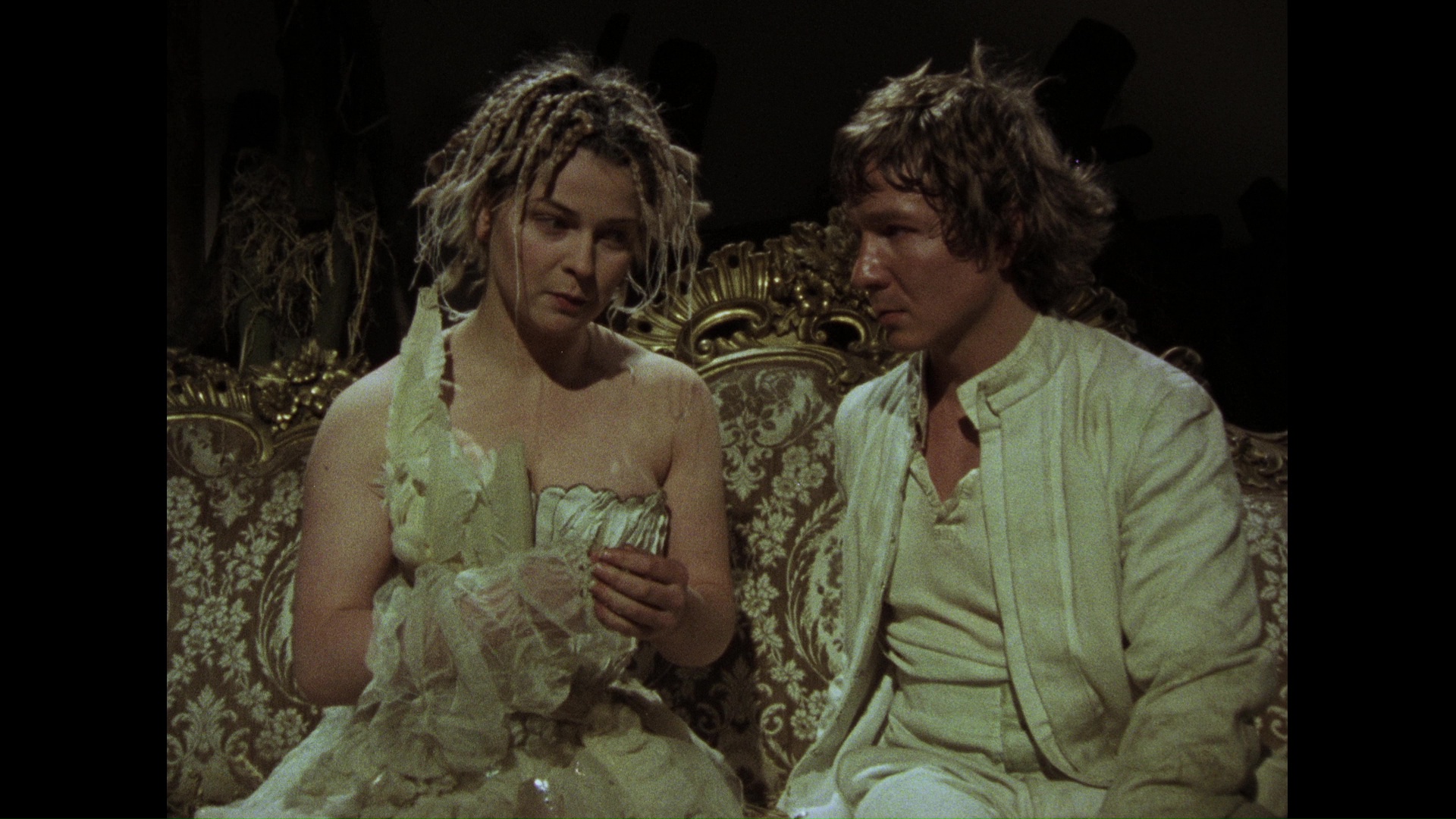 approach here compared to the freewheeling sexuality on Jubilee. "Stormy Weather: The Magic Behind The Tempest" (18m15s) brings back Willcox, joined this time by choreographer Stuart Hopps for an updated and more thorough look at Jarman's process including a look at his notebooks that chronicled everything he creatively touched. A new interview with Scarlett-Davis (21m33s), is a more general set of recollections about memorable road trips and location scouting, while producer-filmmaker Don Boyd has a separate interview (32m50s) about running in Jarman's art world circles and making films during the flamboyant heyday of British indie cinema. A new interview with production designer Christopher Hobbs, "A Meeting of Minds" (6m29s), is more of a personal reminiscence about how he met the director and found an artistic kinship in 1970; you'll see a lot more of him elsewhere on the set. A single image gallery offers an intriguing collection of drawings, photos, shots of a rare 45 single, and a distributor announcement along with Scum, Hussy, and Sweet William. A U.K. trailer (featuring video-generated credits and presumably intended for VHS consumption) is also included. The presentation also advances over the U.S. disc with a clearer and more finely detailed presentation that makes the dark scenes (of which there are many) easier to enjoy, and the LPCM English mono audio (with optional English SDH subtitles, as do the the subsequent discs in the set) also in fine condition. Definitely not your average Shakespeare release, this one won't be very useful for high school English teachers but will richly reward those who want to see a bold, individual take on the Bard's bittersweet last work.
approach here compared to the freewheeling sexuality on Jubilee. "Stormy Weather: The Magic Behind The Tempest" (18m15s) brings back Willcox, joined this time by choreographer Stuart Hopps for an updated and more thorough look at Jarman's process including a look at his notebooks that chronicled everything he creatively touched. A new interview with Scarlett-Davis (21m33s), is a more general set of recollections about memorable road trips and location scouting, while producer-filmmaker Don Boyd has a separate interview (32m50s) about running in Jarman's art world circles and making films during the flamboyant heyday of British indie cinema. A new interview with production designer Christopher Hobbs, "A Meeting of Minds" (6m29s), is more of a personal reminiscence about how he met the director and found an artistic kinship in 1970; you'll see a lot more of him elsewhere on the set. A single image gallery offers an intriguing collection of drawings, photos, shots of a rare 45 single, and a distributor announcement along with Scum, Hussy, and Sweet William. A U.K. trailer (featuring video-generated credits and presumably intended for VHS consumption) is also included. The presentation also advances over the U.S. disc with a clearer and more finely detailed presentation that makes the dark scenes (of which there are many) easier to enjoy, and the LPCM English mono audio (with optional English SDH subtitles, as do the the subsequent discs in the set) also in fine condition. Definitely not your average Shakespeare release, this one won't be very useful for high school English teachers but will richly reward those who want to see a bold, individual take on the Bard's bittersweet last work.  Jarman's fascination with creating
Jarman's fascination with creating 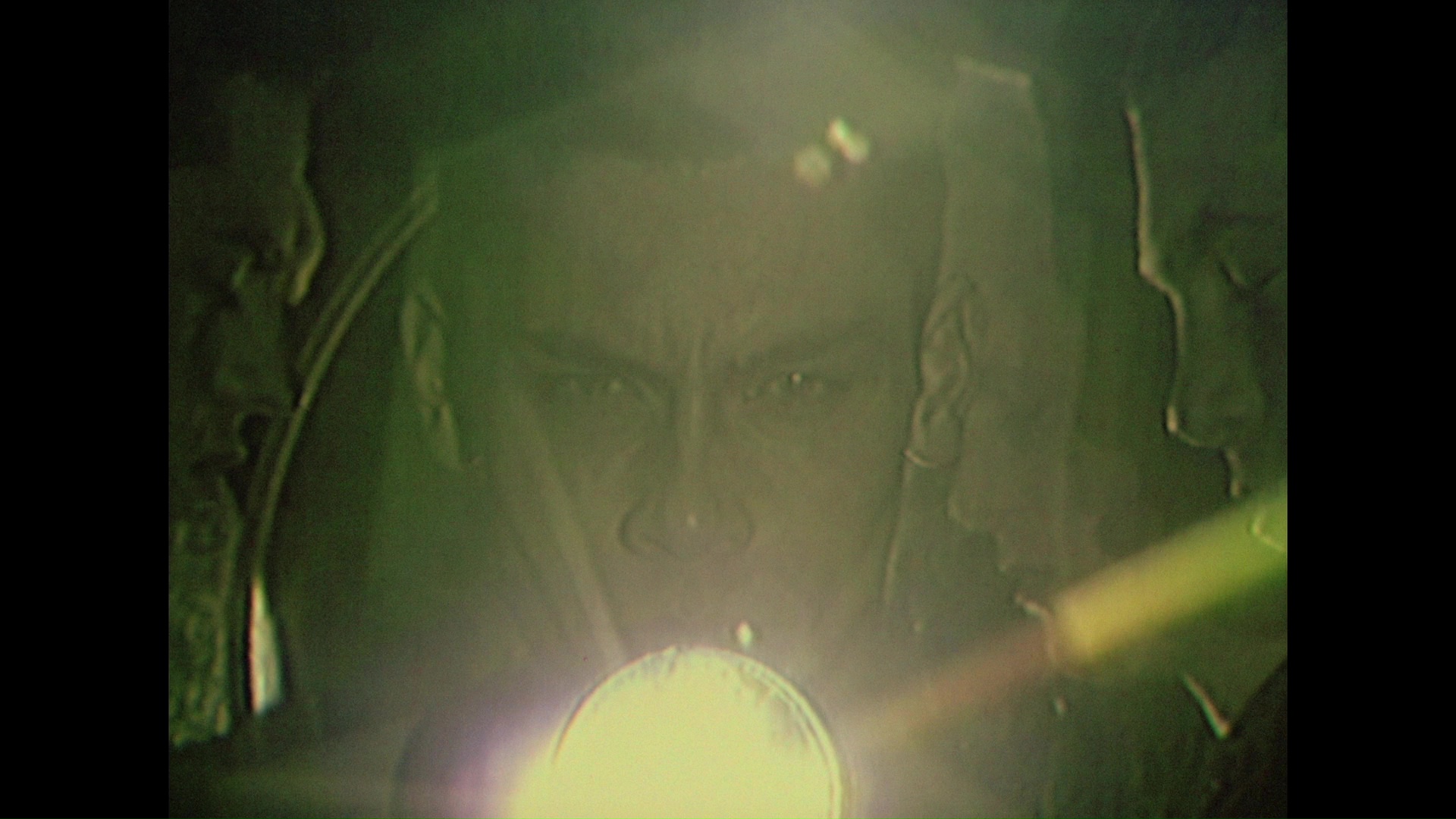 features devoid of traditional narrative and reliant on imagery captured via lower resolution sources really came to the fore with The Angelic Conversation, a study of romantic attraction between two men conveyed through readings of Shakespeare's sonnets by future Oscar winner Judi Dench. There's no dialogue here or narrative progression per se as it's really more of a meditative look at a young man longing to be with another, all shot in Super 8 and heavily processed with slow motion, tinting, and distressed video effects making it a close aesthetic companion to Jarman's projection videos for Pet Shop Boys concerts and his more ambitious music video works like his three-song opus for The Smiths' The Queen Is Dead.
features devoid of traditional narrative and reliant on imagery captured via lower resolution sources really came to the fore with The Angelic Conversation, a study of romantic attraction between two men conveyed through readings of Shakespeare's sonnets by future Oscar winner Judi Dench. There's no dialogue here or narrative progression per se as it's really more of a meditative look at a young man longing to be with another, all shot in Super 8 and heavily processed with slow motion, tinting, and distressed video effects making it a close aesthetic companion to Jarman's projection videos for Pet Shop Boys concerts and his more ambitious music video works like his three-song opus for The Smiths' The Queen Is Dead. 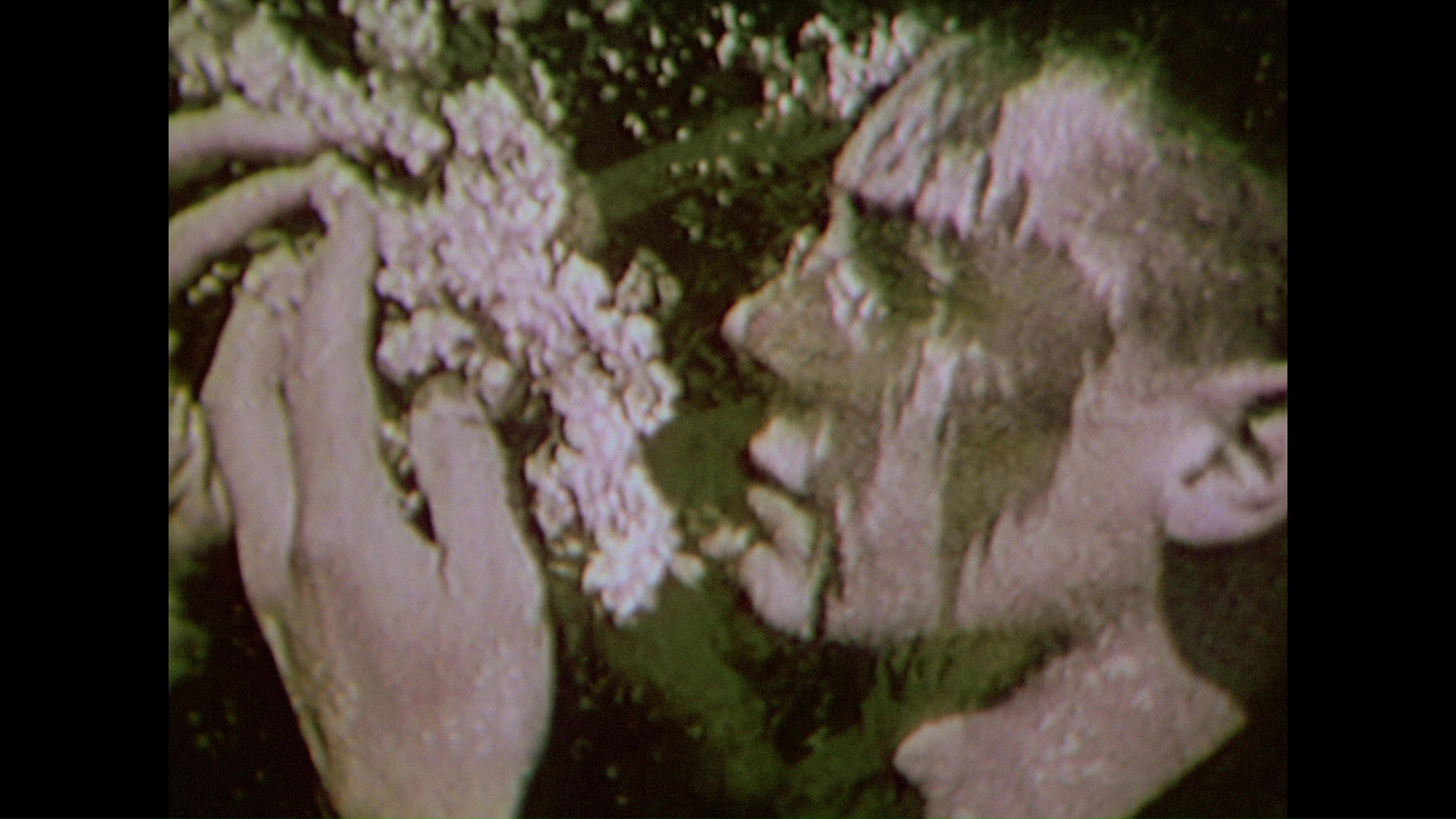 (10m49s) explaining how Jarman really made
(10m49s) explaining how Jarman really made 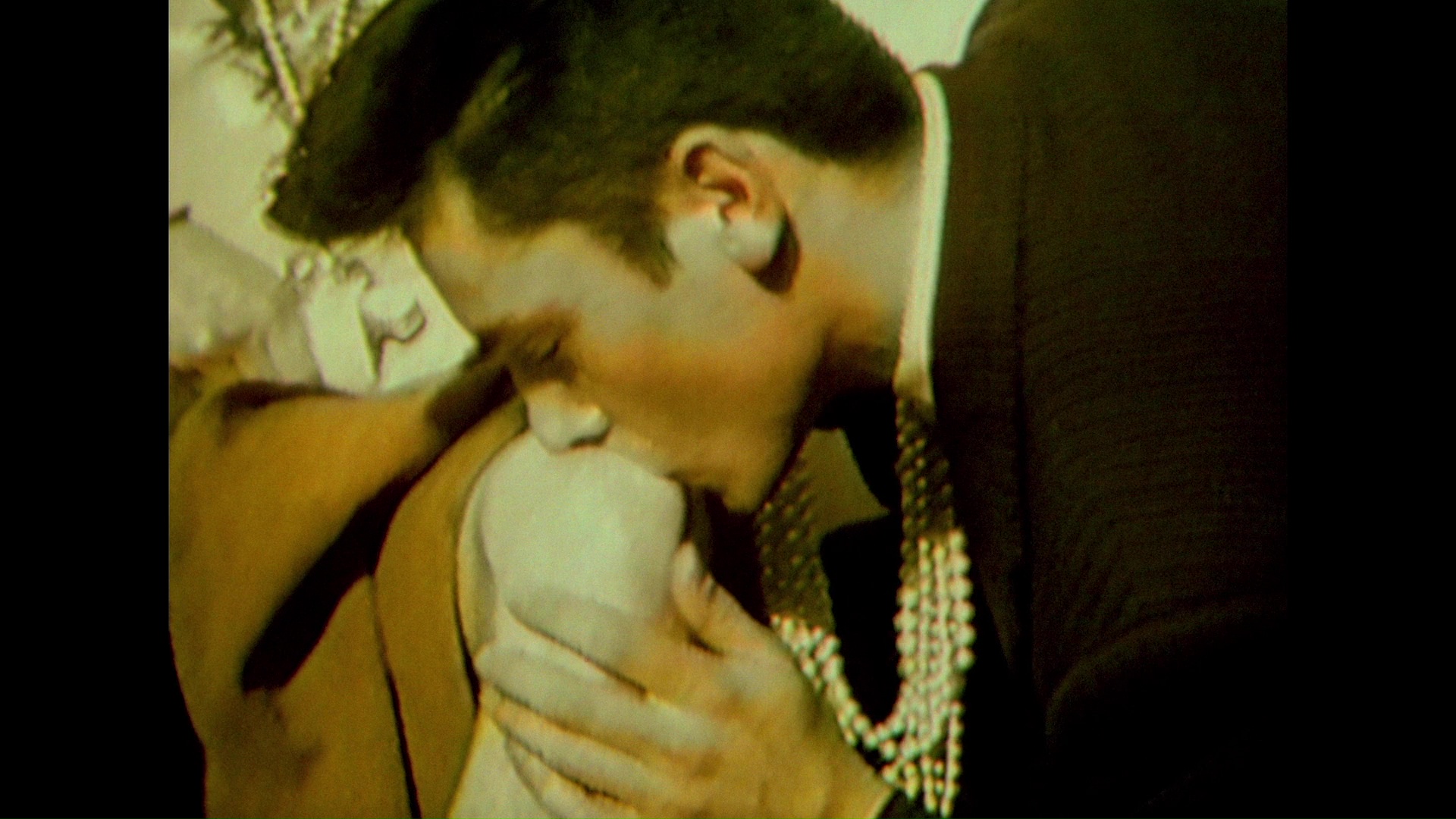 all of his films essentially about himself and often allowed films to gestate through a lengthy process from the storyboard process.
all of his films essentially about himself and often allowed films to gestate through a lengthy process from the storyboard process. 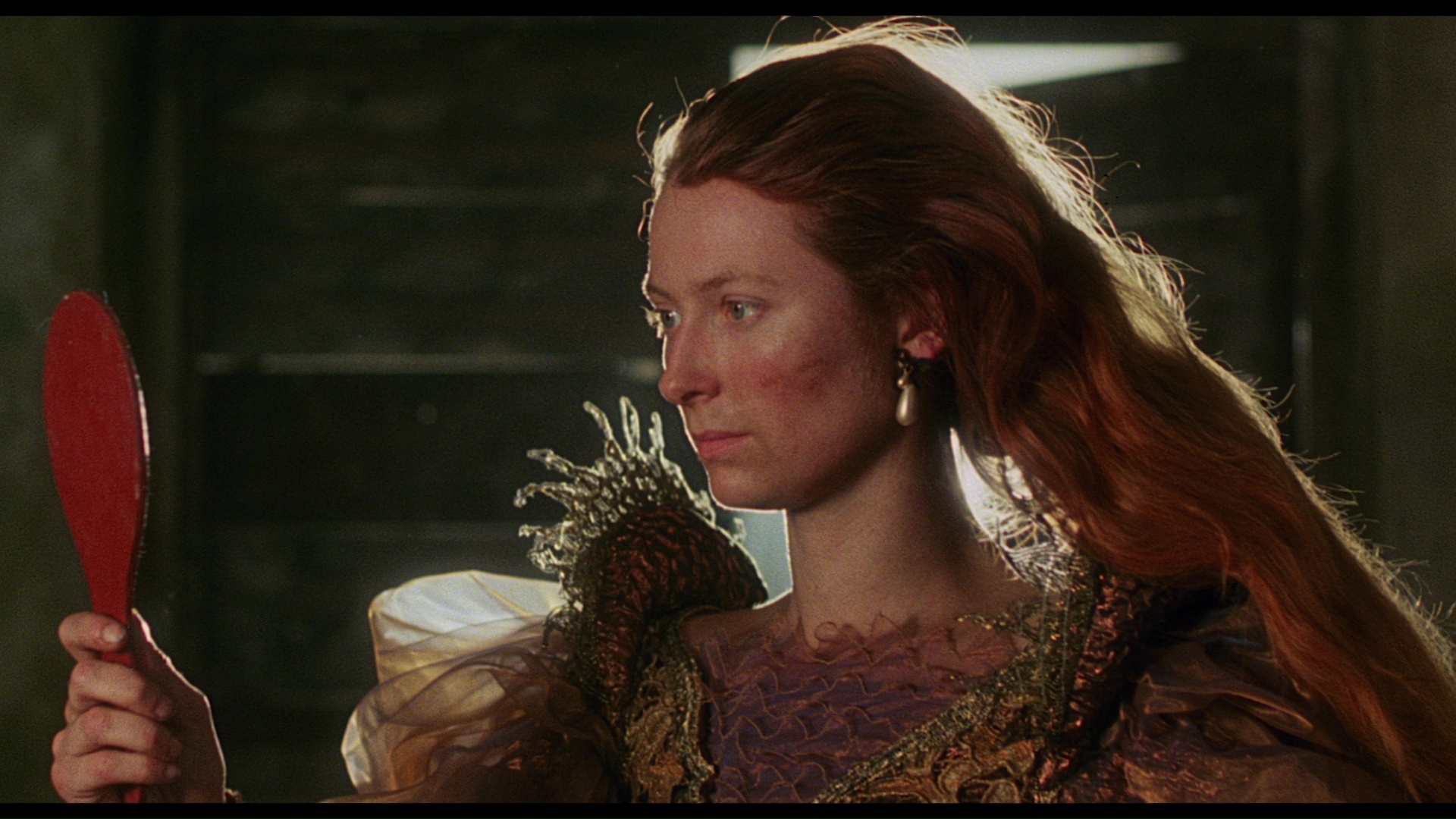 Jumping back for a moment to Jarman's work on
Jumping back for a moment to Jarman's work on 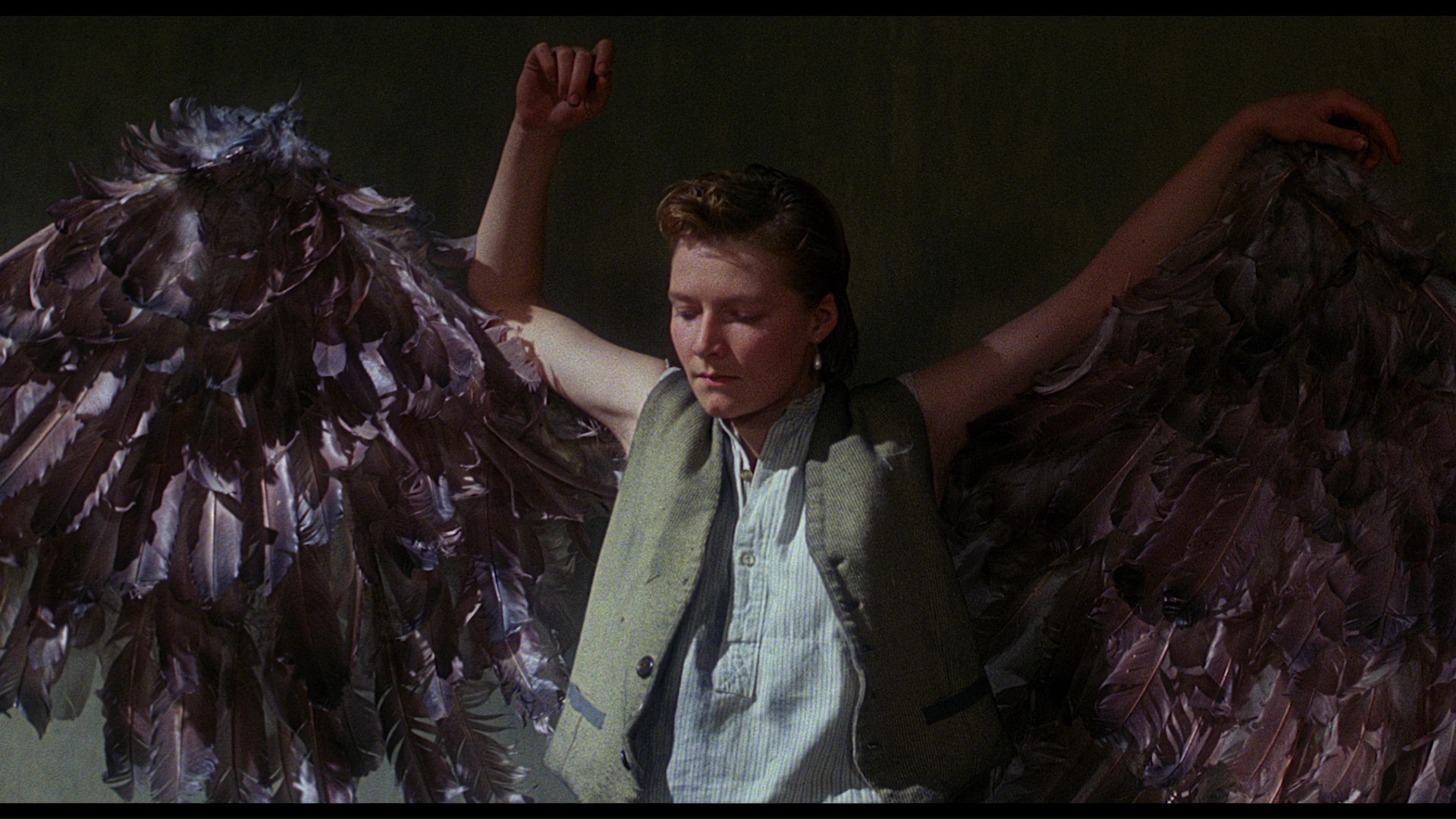 The Devils, that film’s director, Ken Russell, was already established as a radical master of the biopic, turning historical and pop culture personalities into grist for his own obsessions and visual quirks. Oddly, it took Jarman over a decade to try his hand at the same approach with Caravaggio, a visually overwhelming examination of the famous painter who redefined the use of light in painting and scandalized the church by portraying sacred figures as dirty, commonplace peasants. Of course, the painter’s life was no less remarkable; a ruffian prone to fighting, gambling, and copulating apparently every waking moment he wasn’t holding a paintbrush, Caravaggio could be read in many ways as a prototype for today’s modern celebrity.
The Devils, that film’s director, Ken Russell, was already established as a radical master of the biopic, turning historical and pop culture personalities into grist for his own obsessions and visual quirks. Oddly, it took Jarman over a decade to try his hand at the same approach with Caravaggio, a visually overwhelming examination of the famous painter who redefined the use of light in painting and scandalized the church by portraying sacred figures as dirty, commonplace peasants. Of course, the painter’s life was no less remarkable; a ruffian prone to fighting, gambling, and copulating apparently every waking moment he wasn’t holding a paintbrush, Caravaggio could be read in many ways as a prototype for today’s modern celebrity. 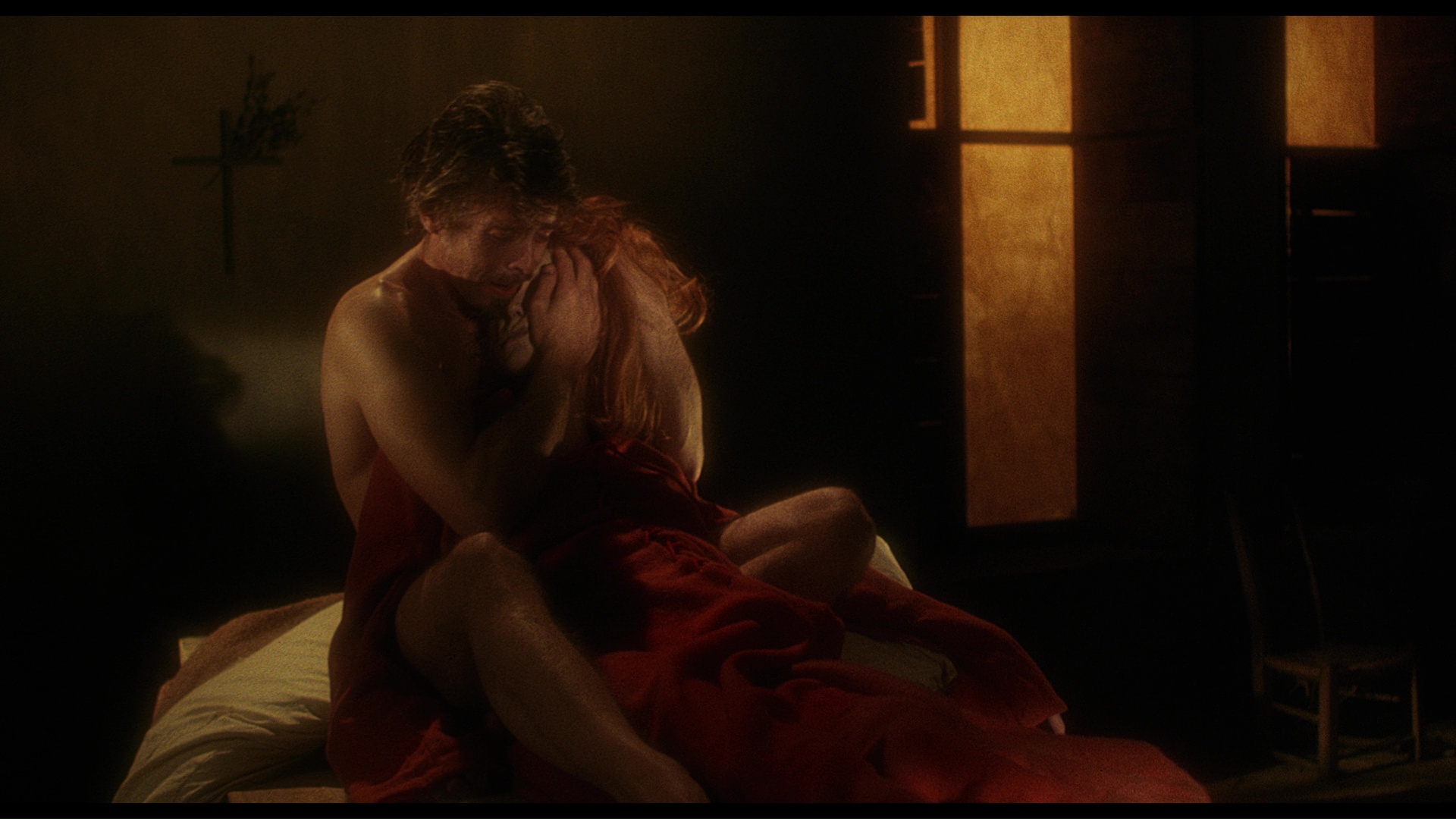 he becomes involved in a destructive and ultimately violent threesome. We also see how the artist’s youth was affected by an encounter with the Cardinal (horror favorite Gough), who cautions him that his controversial work and behavior may have
he becomes involved in a destructive and ultimately violent threesome. We also see how the artist’s youth was affected by an encounter with the Cardinal (horror favorite Gough), who cautions him that his controversial work and behavior may have 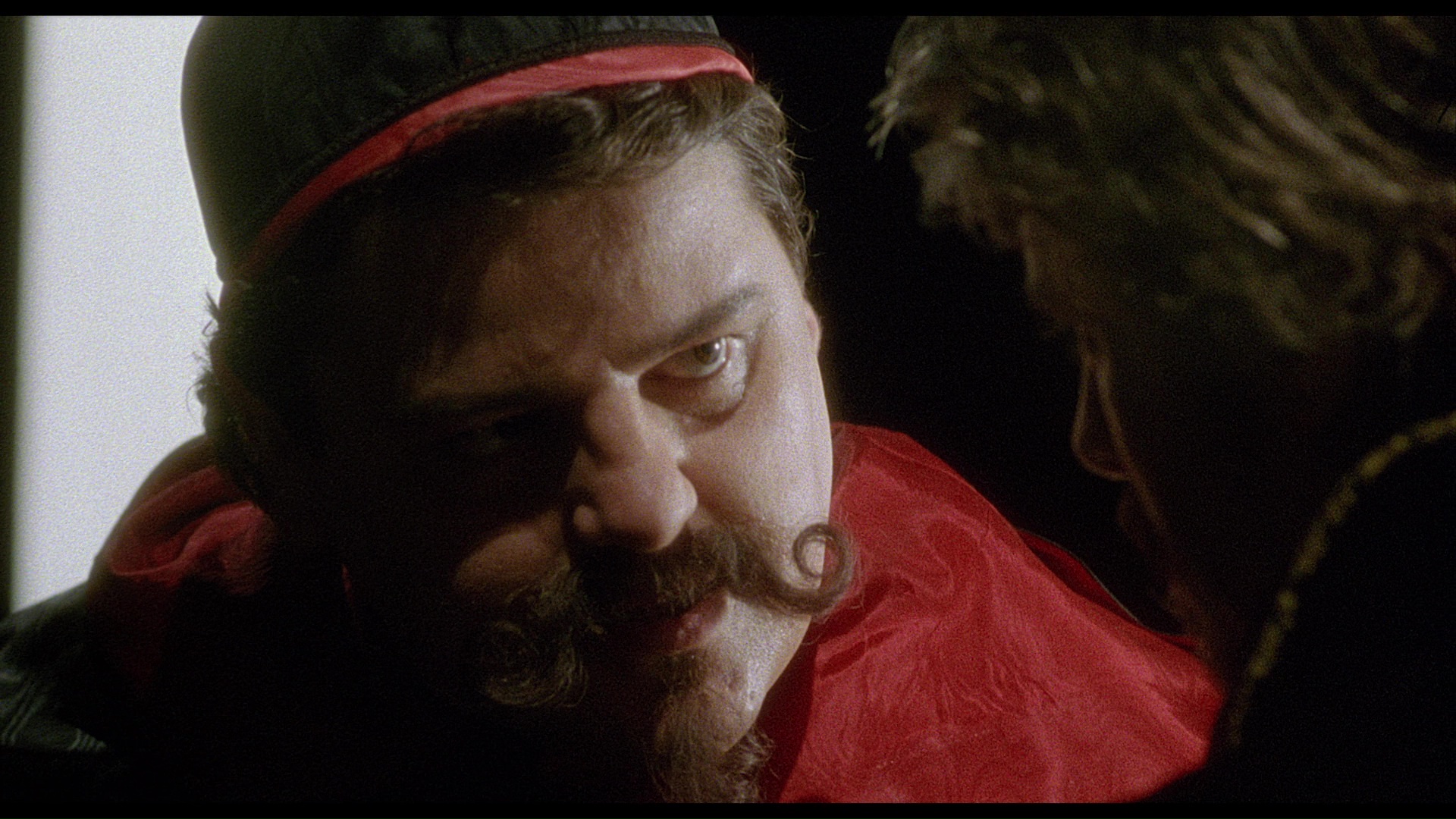 nasty implications, while the rest of church itself (represented by a young Robbie Coltrane!) is less than pleased with the hellraiser’s antics.
nasty implications, while the rest of church itself (represented by a young Robbie Coltrane!) is less than pleased with the hellraiser’s antics. 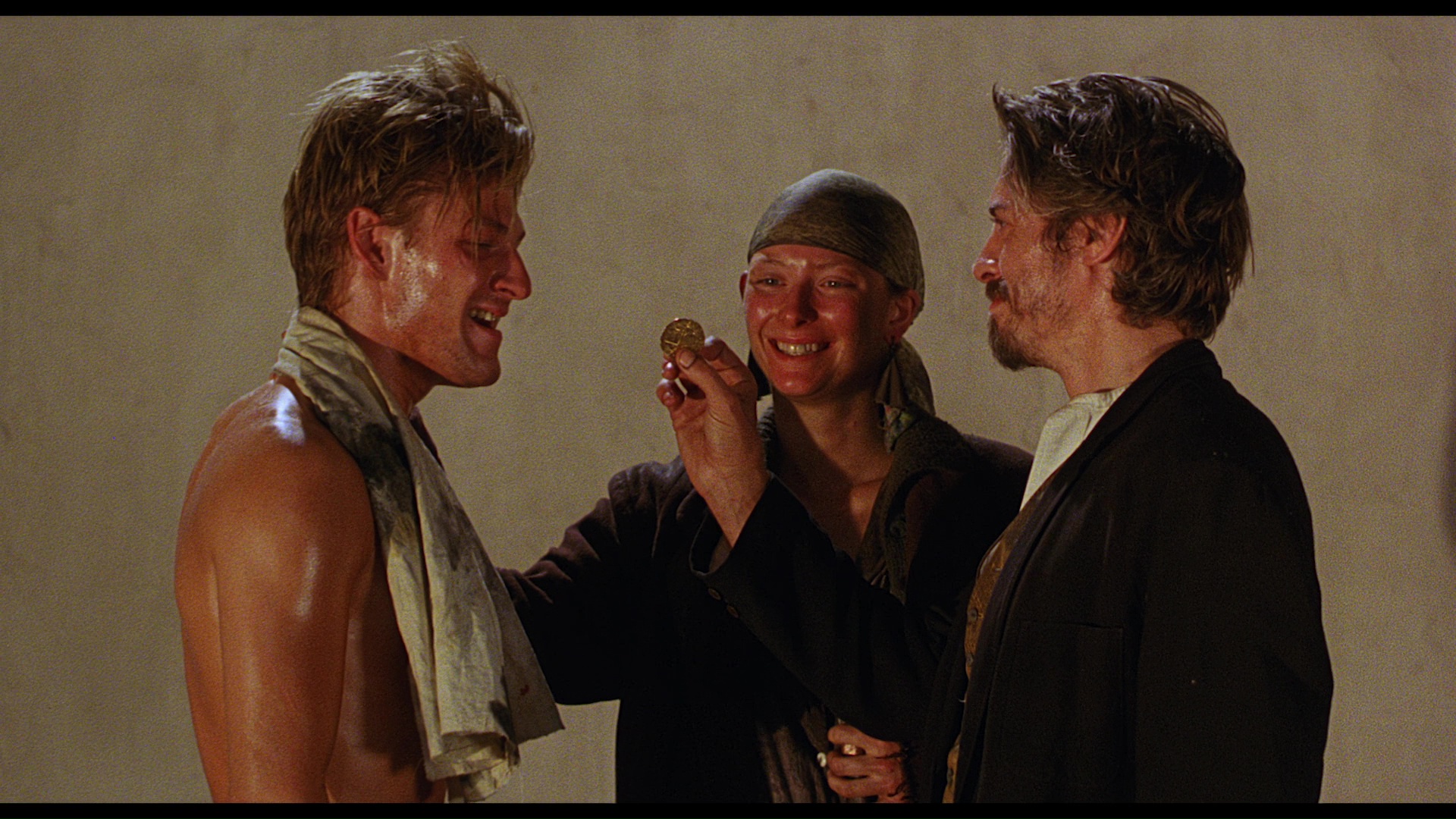 Bean have ultimately proven themselves many times over since, it’s a shame Terry was mostly relegated to supporting roles and TV work.
Bean have ultimately proven themselves many times over since, it’s a shame Terry was mostly relegated to supporting roles and TV work. 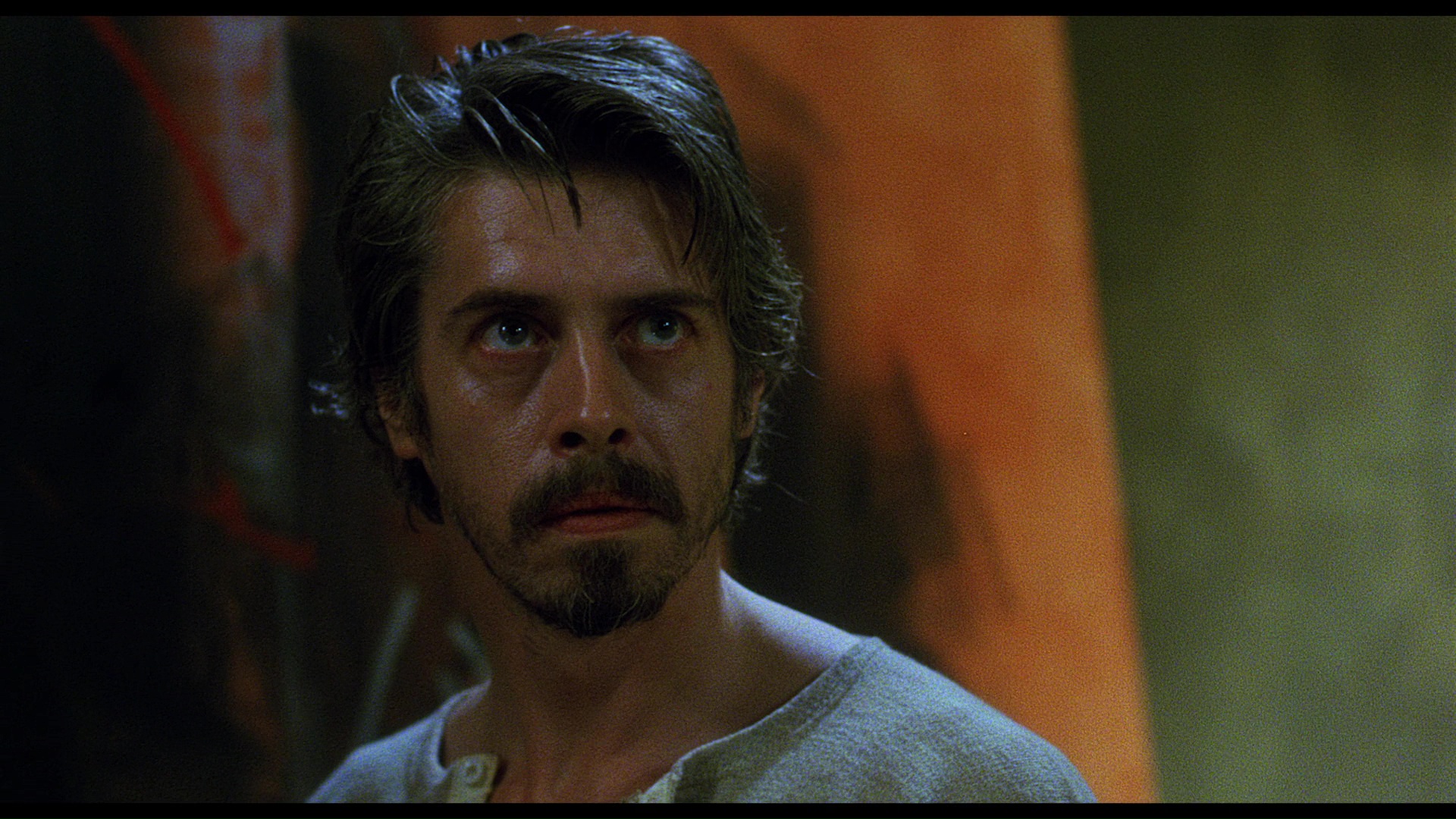
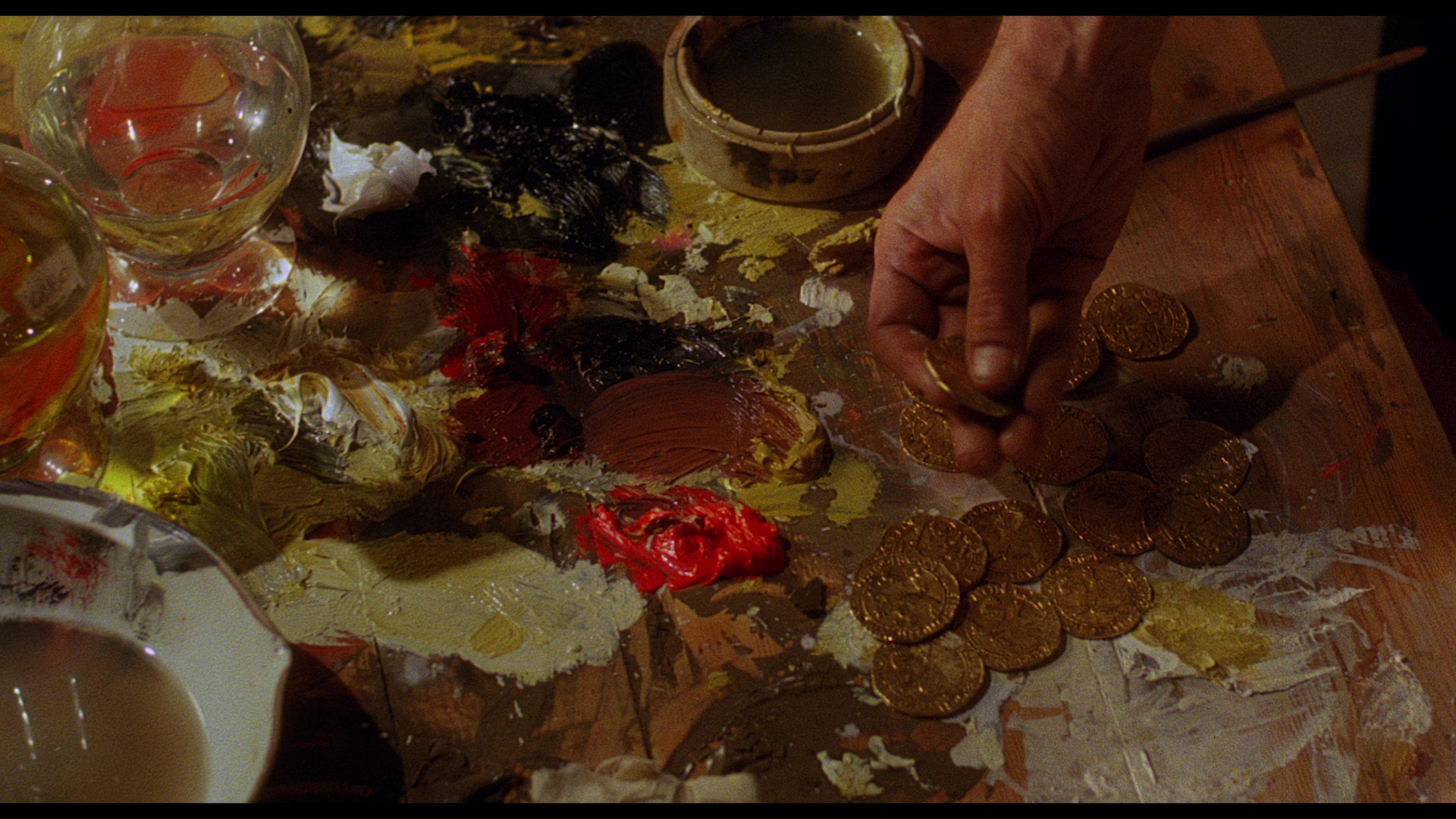 looks spectacular with the subtle gradations of the shadowy lighting finally capturing the carefully sculpted look of a Caravaggio painting; textures in costumes and hairstyles are also much more tactile and easier to appreciate. In addition to the commentary, the film can also be played with the Beristain audio commentary or a vintage Jarman audio interview by Derek Malcolm about the construction of the film and other artistic connections
looks spectacular with the subtle gradations of the shadowy lighting finally capturing the carefully sculpted look of a Caravaggio painting; textures in costumes and hairstyles are also much more tactile and easier to appreciate. In addition to the commentary, the film can also be played with the Beristain audio commentary or a vintage Jarman audio interview by Derek Malcolm about the construction of the film and other artistic connections  including a bit about Sally Potter; it runs just under an hour, and though audio quality is far from optimal, it's a very jovial and lighthearted conversation. Another audio option is the original recording sessions for the film, which runs 64m5s and sounds great in uncompressed LPCM stereo. Video extras kick off with "Caravaggio in Docklands" (15m18s), a 1985 collection of VHS-shot location footage by Ron Peck and Mark Ayres showing the construction of the sets in Limehouse Studios. The Nigel Terry, Tilda Swinton, and Christopher Hobbs interviews have been ported over from the U.S. DVD, while a new interview with actor Dexter Fletcher (who plays the young Caravaggio) at a BFI Southbank screening in 2014 (10m) covers his own path to the film after making Revolution and the labor of love nature of this project. A new Hobbs interview (6m23s) embellishes more about the genesis of the film and the reasons the film couldn't be shot in Italy. The very effective U.K. trailer (identical to the one used in the U.S.) is also included along with six image galleries devoted to production and promotional photos, Derek Jarman's concept notebook, storyboards, alternate storyboards, production designs, and Jarman's notes including thoughts on his own experiences as a painter and his artistic debt here to Pasolini. The limited edition box (2,000 units) also comes with an illustrated 80-page booklet featuring essays and reviews, while direct pre-orders from the BFI Shop also get four postcards featuring previously unpublished Hobbs costume design drawings.
including a bit about Sally Potter; it runs just under an hour, and though audio quality is far from optimal, it's a very jovial and lighthearted conversation. Another audio option is the original recording sessions for the film, which runs 64m5s and sounds great in uncompressed LPCM stereo. Video extras kick off with "Caravaggio in Docklands" (15m18s), a 1985 collection of VHS-shot location footage by Ron Peck and Mark Ayres showing the construction of the sets in Limehouse Studios. The Nigel Terry, Tilda Swinton, and Christopher Hobbs interviews have been ported over from the U.S. DVD, while a new interview with actor Dexter Fletcher (who plays the young Caravaggio) at a BFI Southbank screening in 2014 (10m) covers his own path to the film after making Revolution and the labor of love nature of this project. A new Hobbs interview (6m23s) embellishes more about the genesis of the film and the reasons the film couldn't be shot in Italy. The very effective U.K. trailer (identical to the one used in the U.S.) is also included along with six image galleries devoted to production and promotional photos, Derek Jarman's concept notebook, storyboards, alternate storyboards, production designs, and Jarman's notes including thoughts on his own experiences as a painter and his artistic debt here to Pasolini. The limited edition box (2,000 units) also comes with an illustrated 80-page booklet featuring essays and reviews, while direct pre-orders from the BFI Shop also get four postcards featuring previously unpublished Hobbs costume design drawings. ![]()